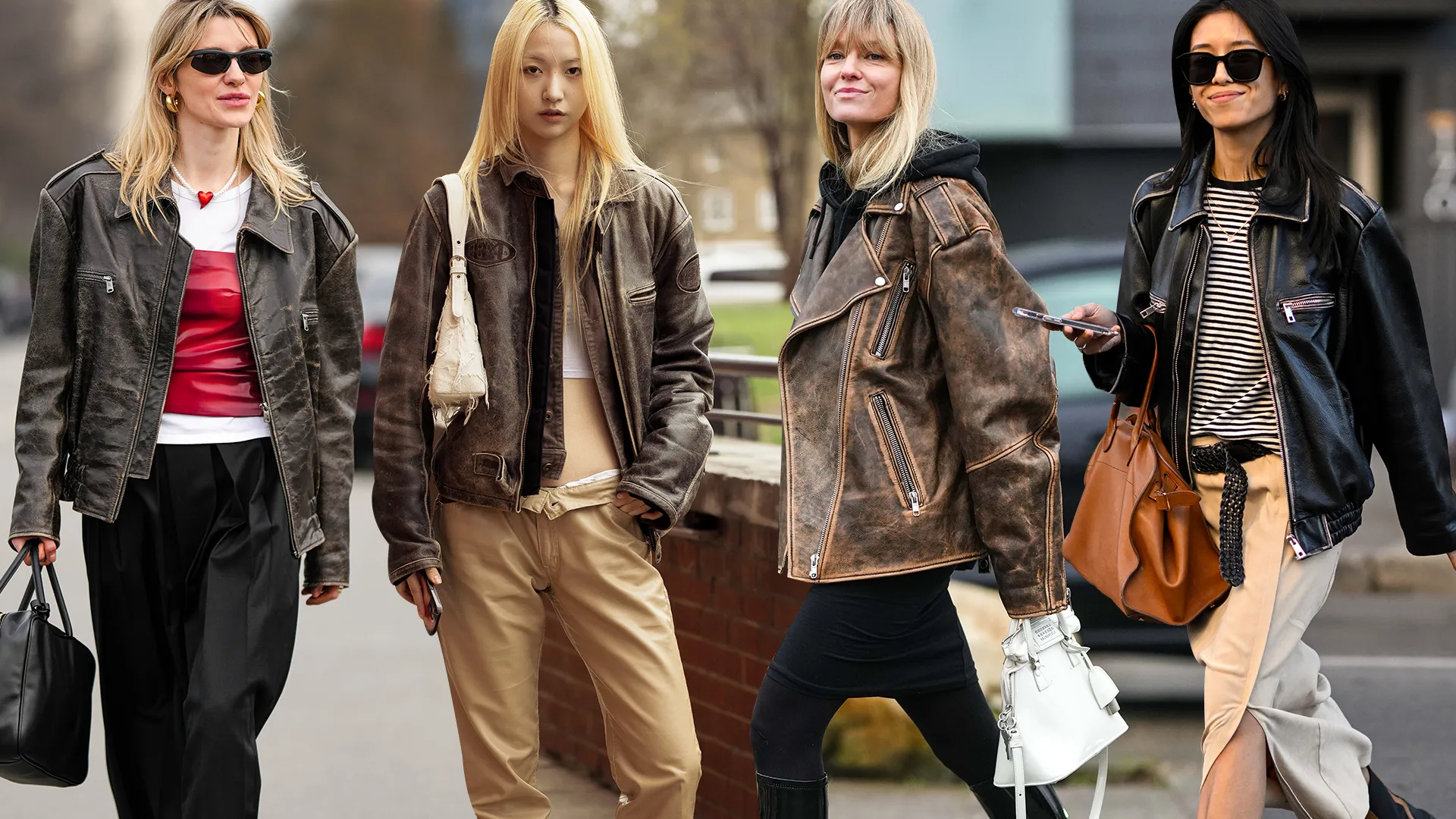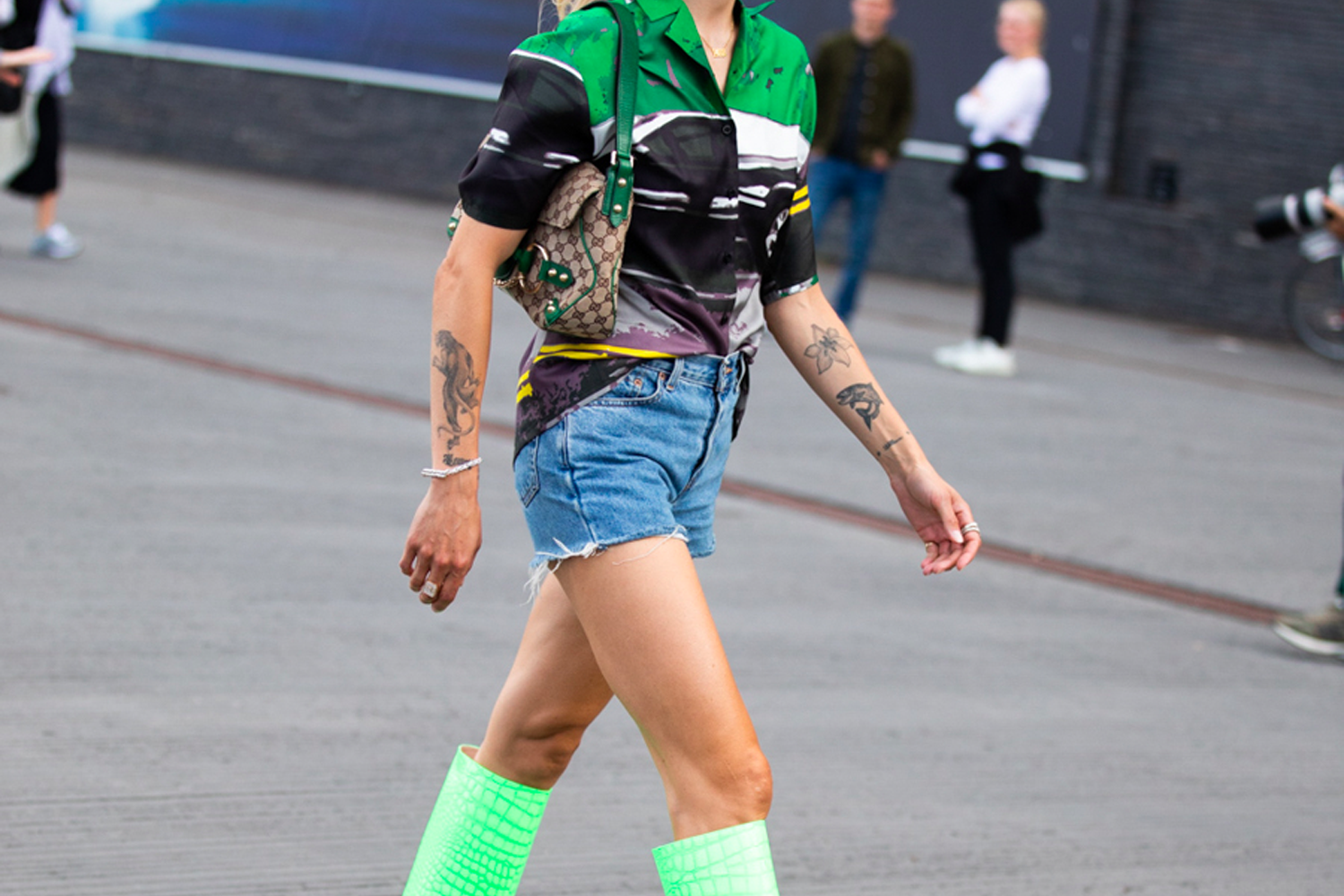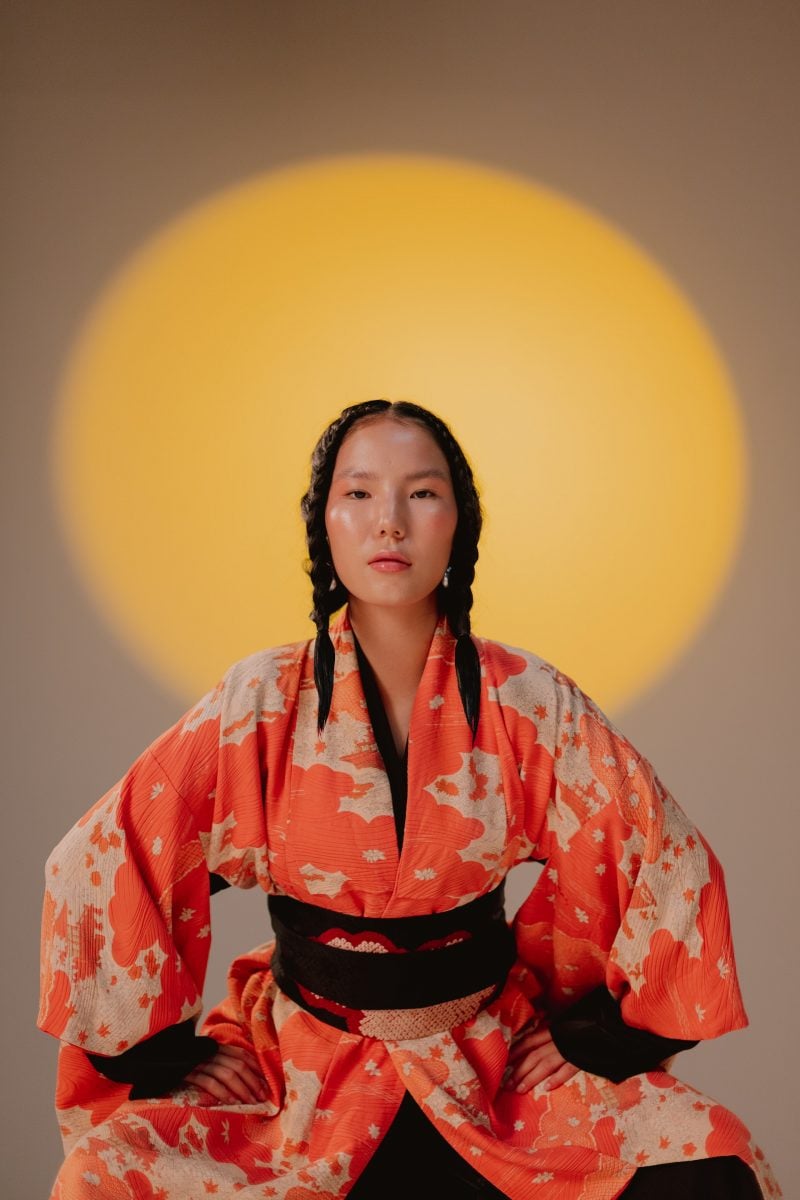
Meeting the Kimono at the Quai Branly Museum
This publication is also available in: Français
English (UK)
Deutsch
Italiano
Español
The kimono, both traditional and sensual, is currently being celebrated at the Musée du Quai Branly Jacques Chirac. Running until May 28, the exhibition takes us on a journey to discover this garment, as well as the Japanese culture. The kimono reveals, through its folds, the art of dyeing, embroidery, but also the articulation of society through the ages and its changes. A piece that speaks volumes, symbol of tradition and liberation, but also a visual iconography that continues to inspire creators even today. Here’s a recap of our visit, with a small selection of pieces to share.
A Unique Encounter with Japanese Art
Today, I escaped to distant lands, facing the cold I longed to escape. It was at the Musée du Quai Branly – Jacques Chirac that I ventured, heading towards Japan, to discover the kimono and its history, which I ultimately knew very little about.
Often used today as a homewear piece, as part of the lingerie range, we also wear the garment in summer, in a beach kimono version. Or, it can be reinterpreted in a shorter version, like a jacket that takes on its iconic folds. The other aspect we associate with it is that of traditional Japanese clothing, which has been passed down to us mainly through photographs, and more predominantly films. However, even though everyone knows the kimono, thanks to its appearance recognized across all horizons, few truly know its history and the evolution it has undergone.
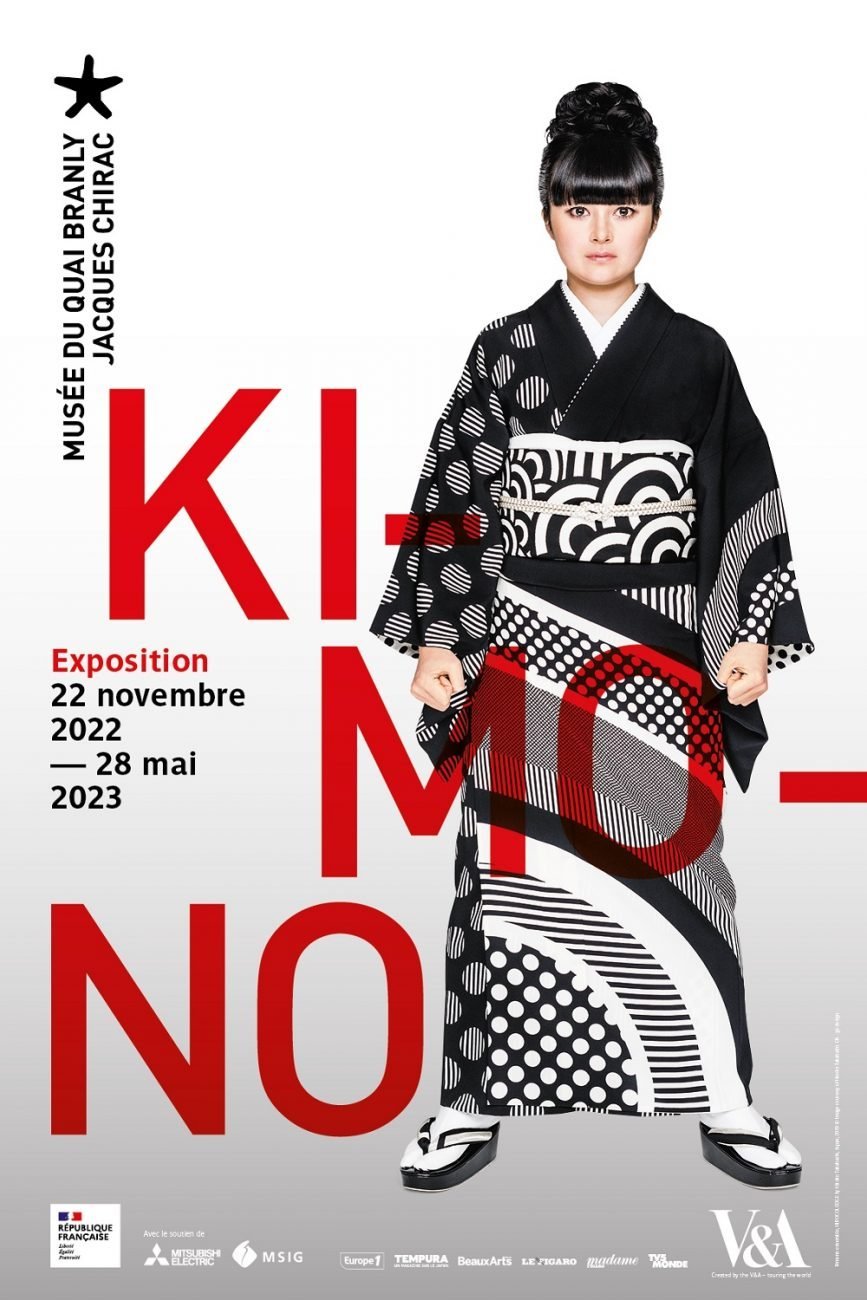
Thus, a total immersion into another universe awaited me at the museum. A stroll of nearly 2 hours, among kimonos more sumptuous than the others, clothing or beauty accessories adorned with meticulous details, painted works and kimono design collections (hinagata), and other elements of furniture and decoration, which highlight all the art and influence of the Japanese piece. Immersed in darkness, we are fascinated by the colors, patterns, and golden inserts that seize the fabrics, all in poetry and delicacy.
We experience an encounter with the piece feeling privileged, as Asian fashion is seldom represented in current exhibitions. Thus, with our eyes wide open before the fabrics, we discover how the piece has marked the history of Japan, but also, how Japan’s history has evolved the piece.
It is on this complementarity and this dual reading that the exhibition draws all its richness.
The Kimono: A Portrait of Society Through the Ages
The exhibition was made possible thanks to the work of curators Anna Jackson and Josephine Rout, respectively the chief curator and curator of the Asia department at the Victoria & Albert Museum in London. We discover a marriage of period pieces from the London museum, as well as treasures from private and public collections, contemporary designer pieces, and kimonos specially made for the occasion.
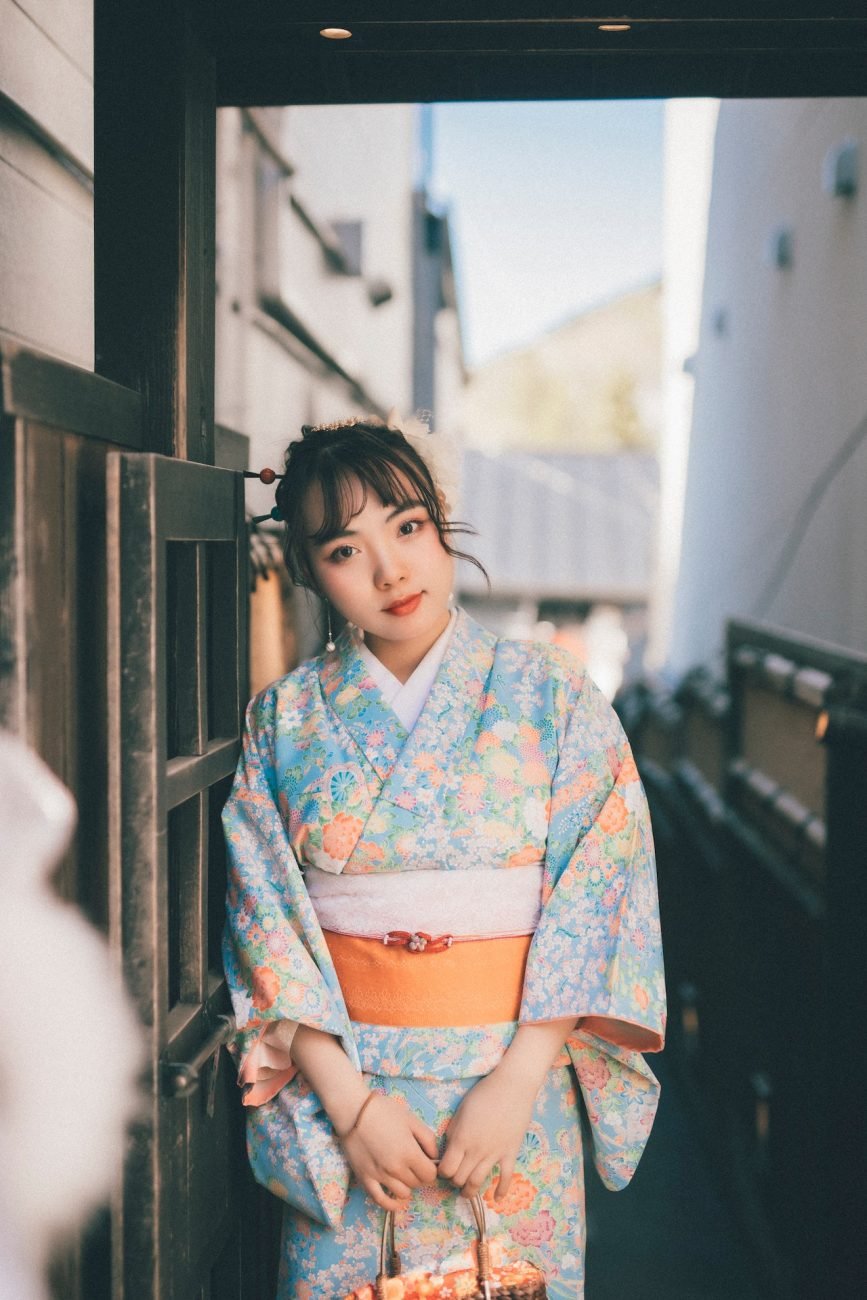
Our encounter with the kimono begins in the Edo period, around 1603, when the garment, meaning “the thing that one wears”, appeared on center stage. A symbol of luxury highlighting one’s social rank, the wearing of the piece, mainly by merchants, was notably emphasized by the celebrities and courtesans of the early 18th century, belonging to the world of entertainment and eroticism in Edo (Tokyo), referred to as “the floating world”.
The second part of the visit takes us to the late 19th century, to the Meiji period, marking the end of the Shogun’s reign (military ruler of the country). A moment when production shifted, on one hand, from Kyoto to Edo (Tokyo), and when the kimono exported to the rest of the world, leading it to worldwide notoriety. This also spread the influence of the garment even to loungewear or decorative furnishing elements (tea sets, vases…).
We conclude with the post-World War II period, up to the present day, where the wearing of the kimono became restricted to official events. And where the piece transits between a relationship to the past and tradition, facing a more modernized use in pop culture. Both among fashion creators worldwide, as well as in artistic works such as films or musical events.
A Linked History
This journey allows us to discover, on one hand, the evolution of the piece over the years. Between cuts, sleeve lengths, colors, materials, techniques used, patterns and their arrangement, inspirations and references (between the Tale of Ise and the Tale of Genji), styles, sizes, and the wearing of the Obi (belt), the accessorization of the kimono, the various layers… We observe the entire history of the piece through a creative lens, echoing a more anthropological observation.
Indeed, the evolution of the kimono is inseparable from the evolution of society itself. The piece reflects the desires of the classes of the time and their intrinsic relationships. But also the evolution and deployment of fashion in Japanese cities. The laws established by the regime in place, and the influences of public figures. The Japanese relationship to the piece, between the occasions to wear it, and to whom it was intended… The textile has adapted to the evolving needs and desires, both of the Japanese people and the rest of the world over the years.
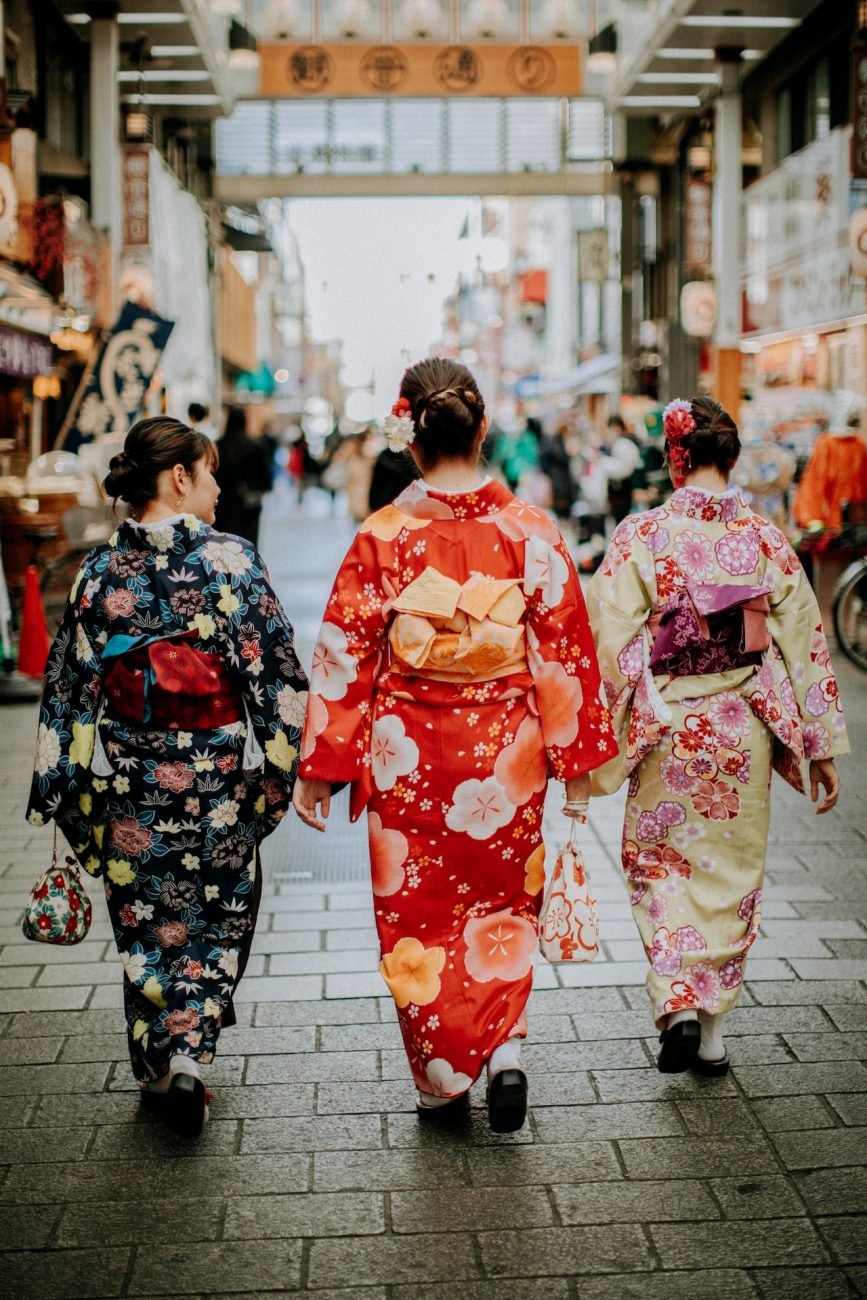
We travel back in time, moving from a scene highlighting merchants, in search of new fabrics in the Suruga cho district, to a wedding scene with an exchange of kimono and color. We experience an immersion in floating scenes, or even in the pleasure district, Yoshiwara, where courtesans dressed in kimonos were fashion icons. An influence also present in the backstage of kabuki theater.
Then, we come face to face with a photo of Ziggy Stardust, David Bowie’s alter ego, wrapped in a kimono neighboring another that belonged to Freddie Mercury. Nearby, we discover a model reinterpreted by Alexander McQueen, one designed for Dior by John Galliano, a dress version, or even outfits used in Star Wars: Episode III – Revenge of the Sith…
An intriguing path, where we rediscover both the kimono and Japanese society through a different lens. And which makes us feel all the research, encounters, and travels that were necessary for the curators to create this enchanting exhibition that I highly recommend.
How to Wear the Kimono in Current Fashion?
Long associated with luxury, the kimono has, over the years, been reimagined in more affordable materials like cotton. Having spread worldwide, its use has mainly slipped into nightwear, using satin fabrics. But we also see it standing strong in pieces worn daily, or as a cover-up for the beach.
Contemporary designers have reworked it to adapt to different styles and cultures. By working on cuts, lengths, sleeve shapes, approaches to the belt, transparency effects, ornamentation techniques, and patterns… Presenting itself as pieces belonging to both women’s and men’s wardrobes. We can see kimonos designed with wax fabrics, or showcasing the paisley pattern, while others play on a more baby doll side with candy-pink tweed. The straight cut and the overlapping front panels generally remain faithful to traditional models. However, the sleeves are less imposing, and the belt is modernized and slim, unlike the usual Obi.
If the kimono enchants you, good news, we have found some for you on Modalova!
The Short Kimono Jacket for Women
A piece easier to integrate into an outfit, short-cut kimonos serve as a substitute for a jacket, adding dimension to the silhouette and the outfit.
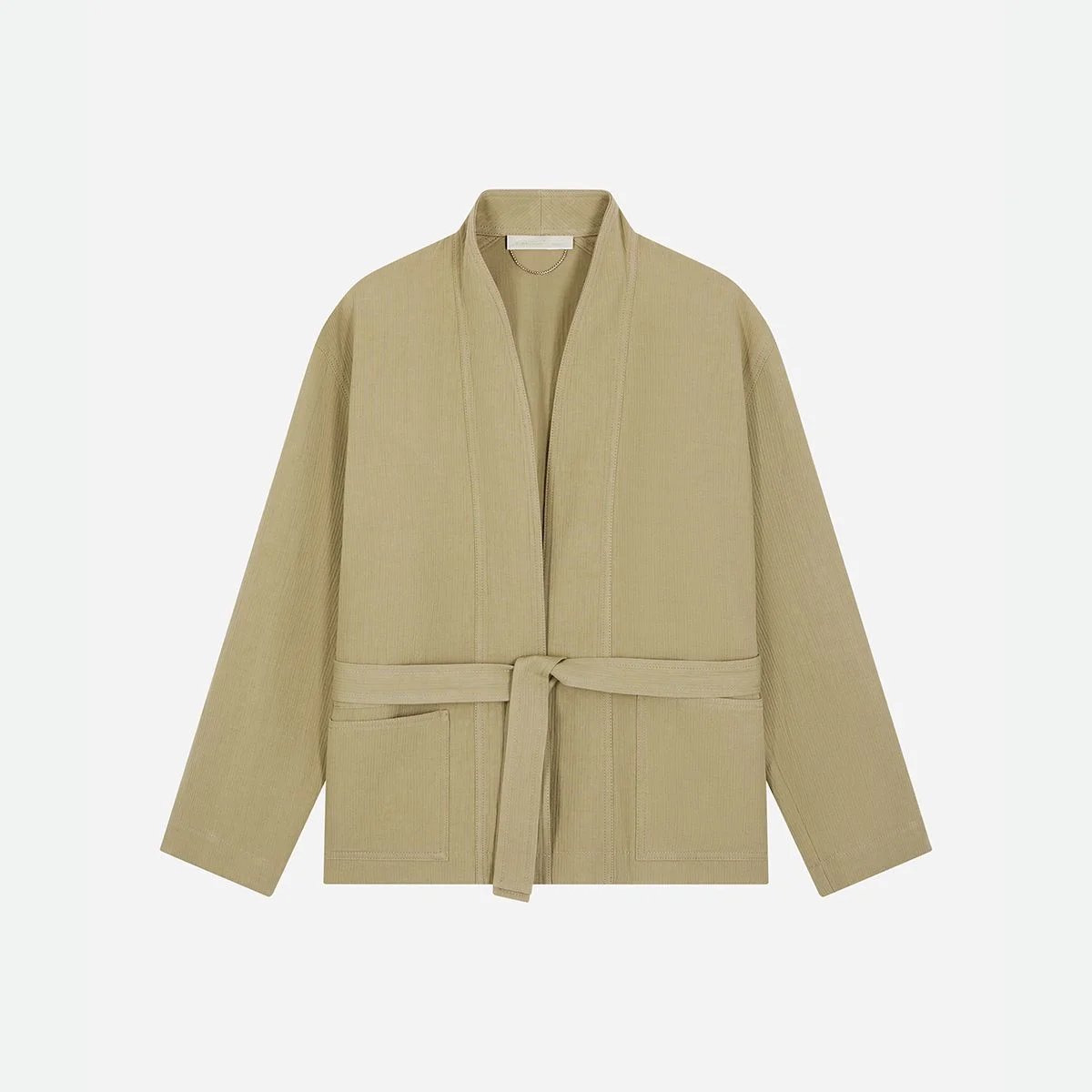
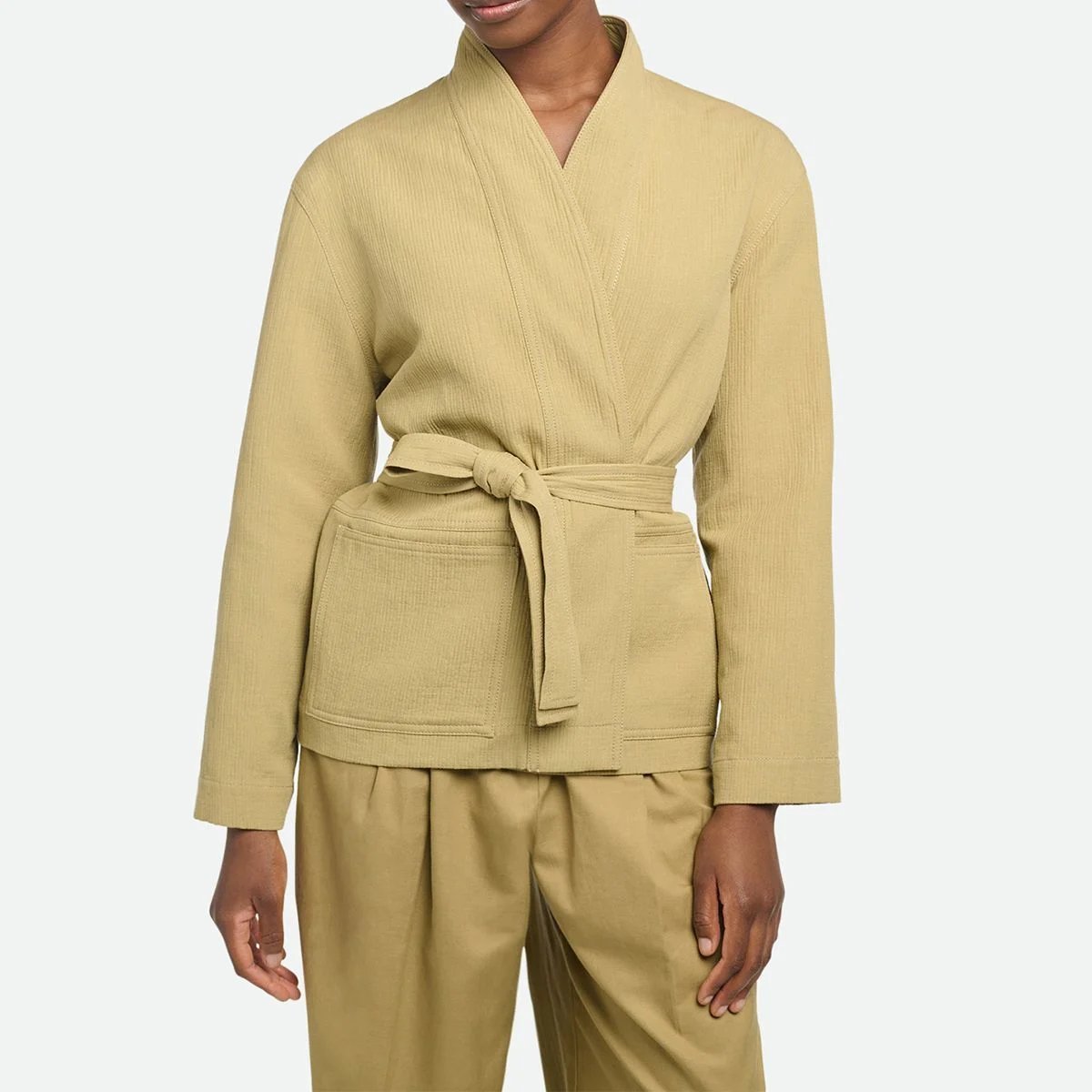
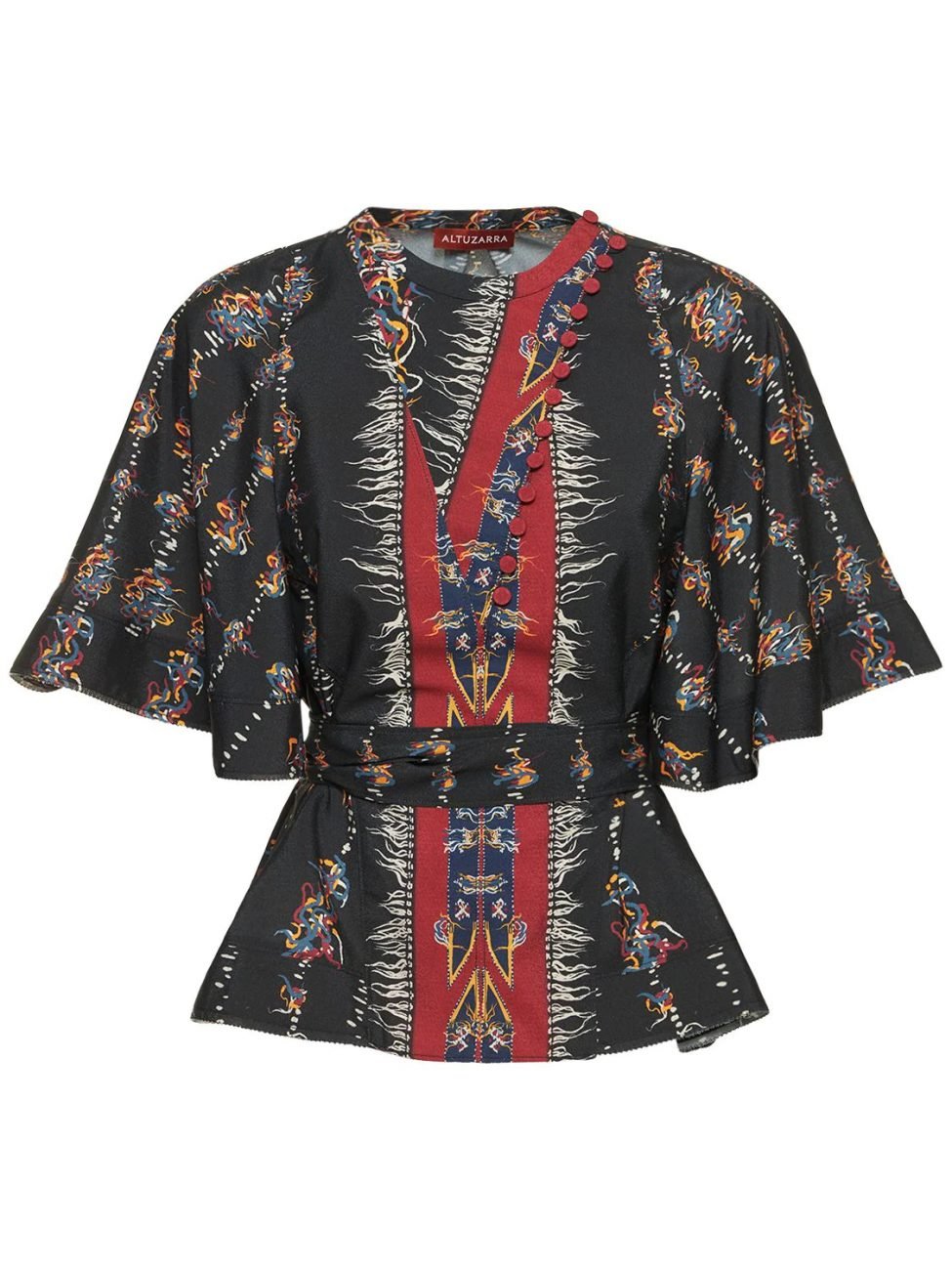
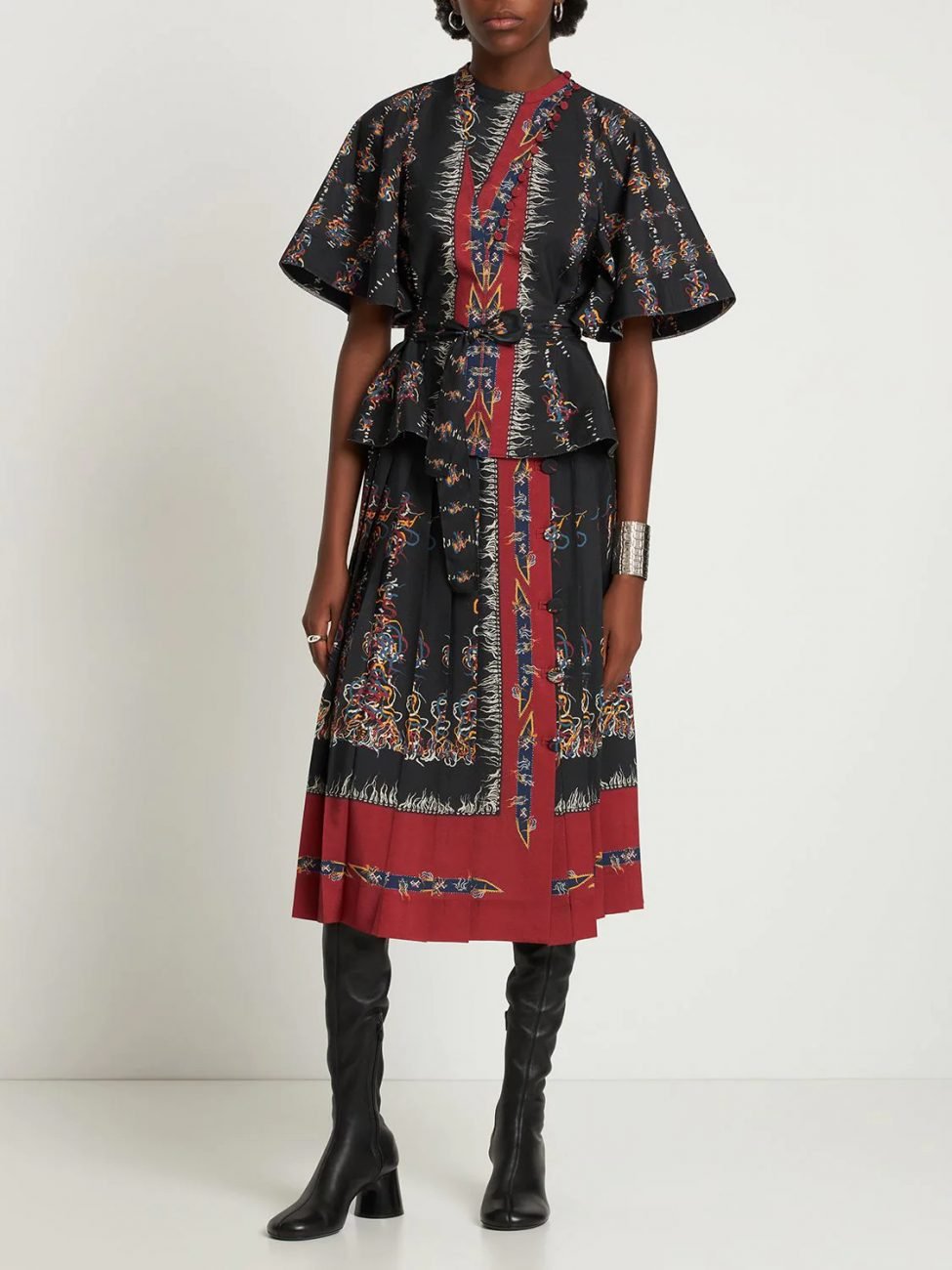
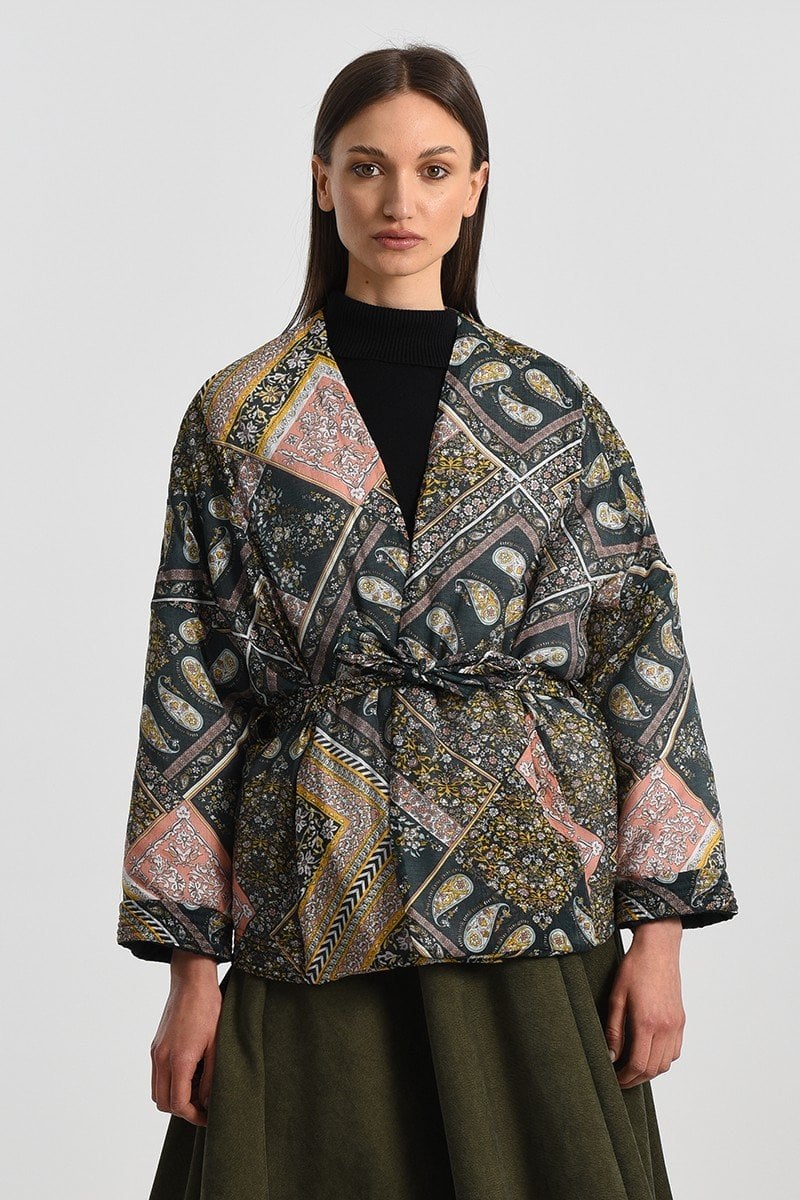
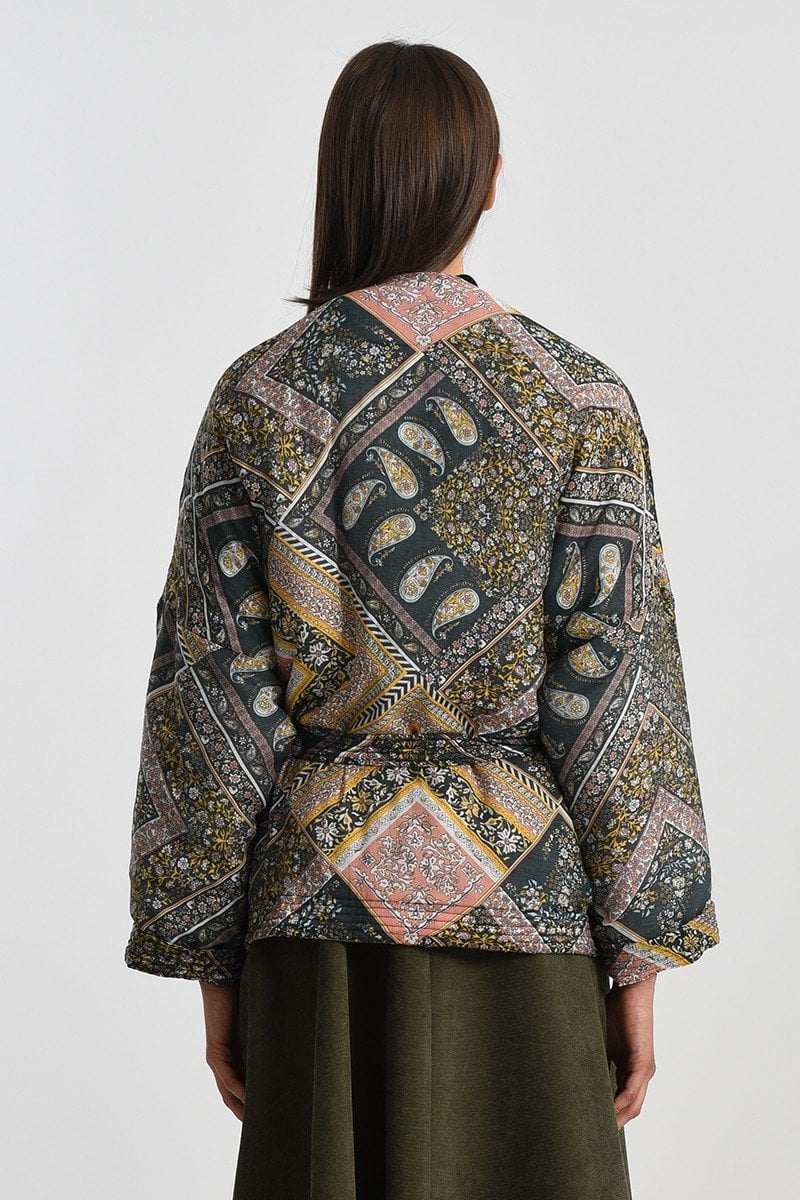
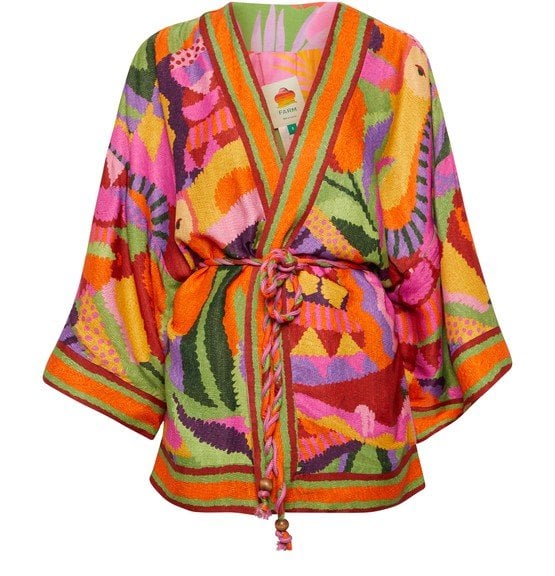
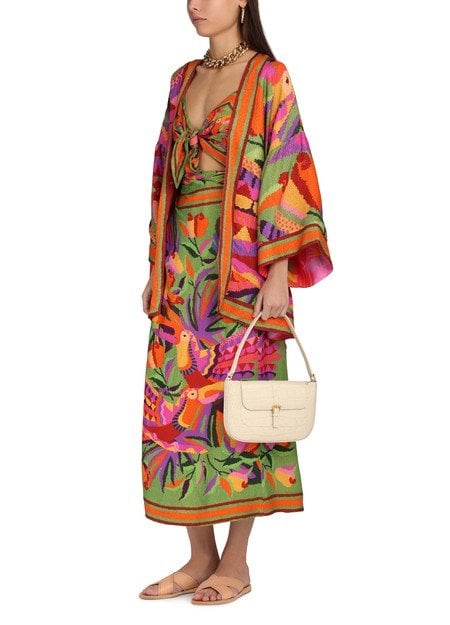
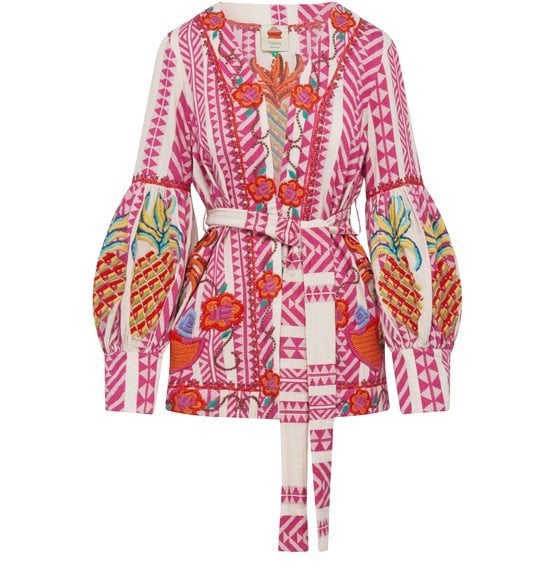
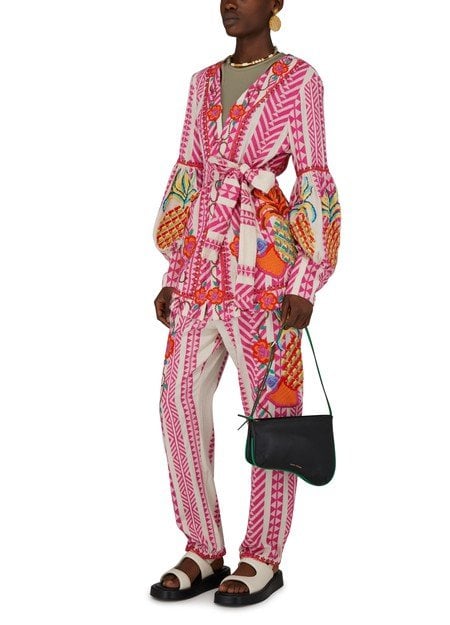
The Long Model
Embracing the characteristic length of most Edo period kimonos, current pieces remain shorter, yet very airy, akin to the summer kimonos that were worn back then.
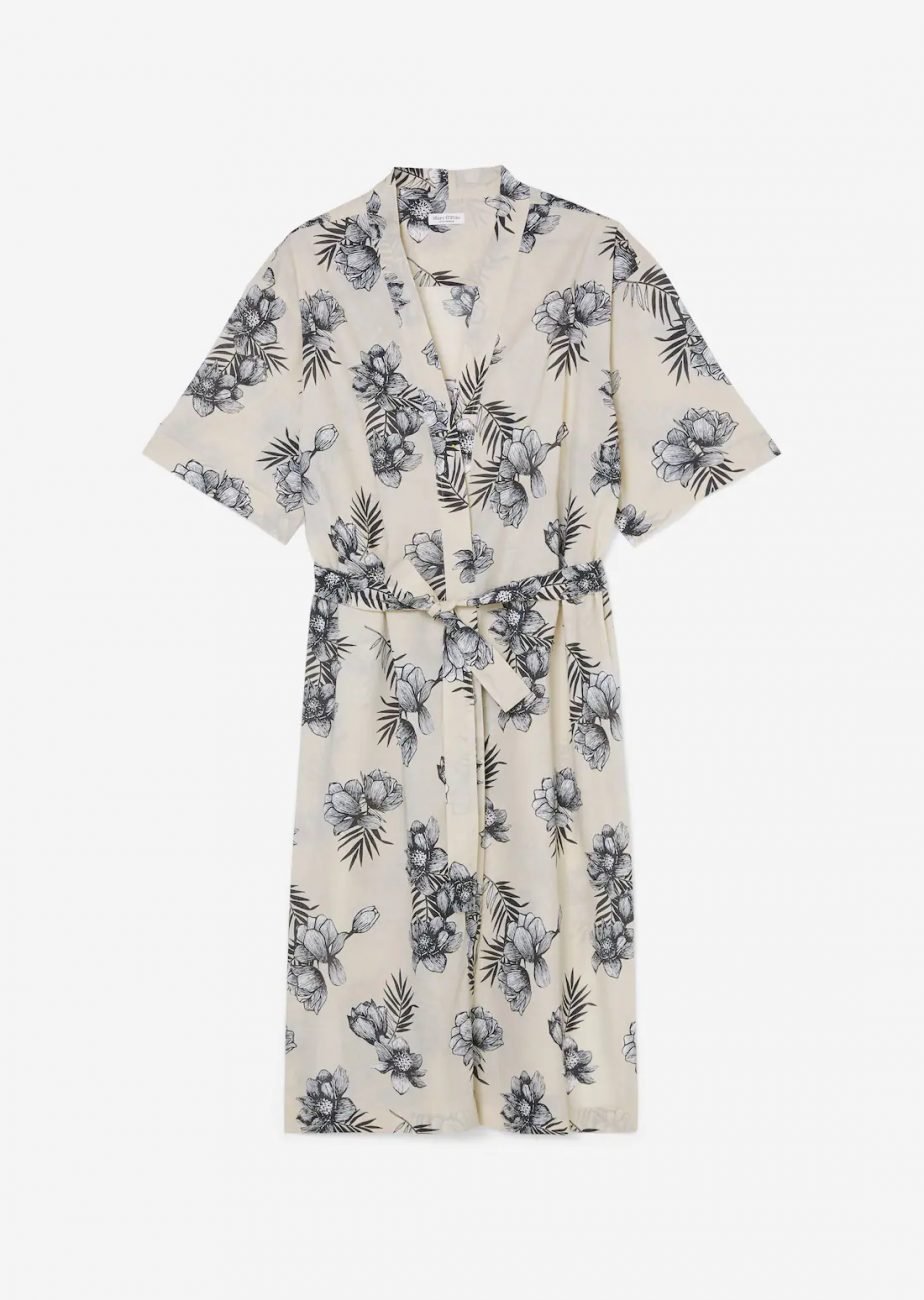
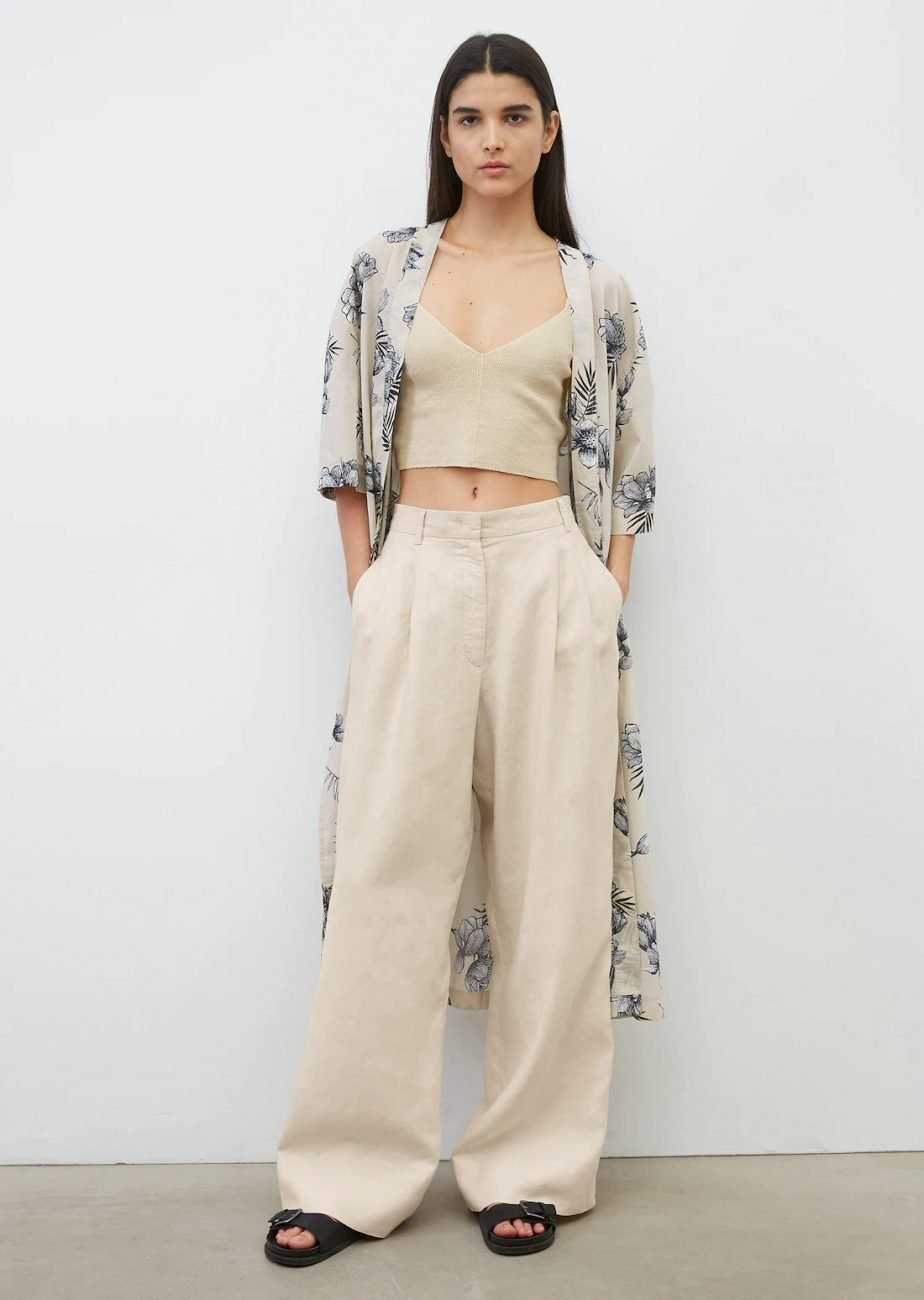
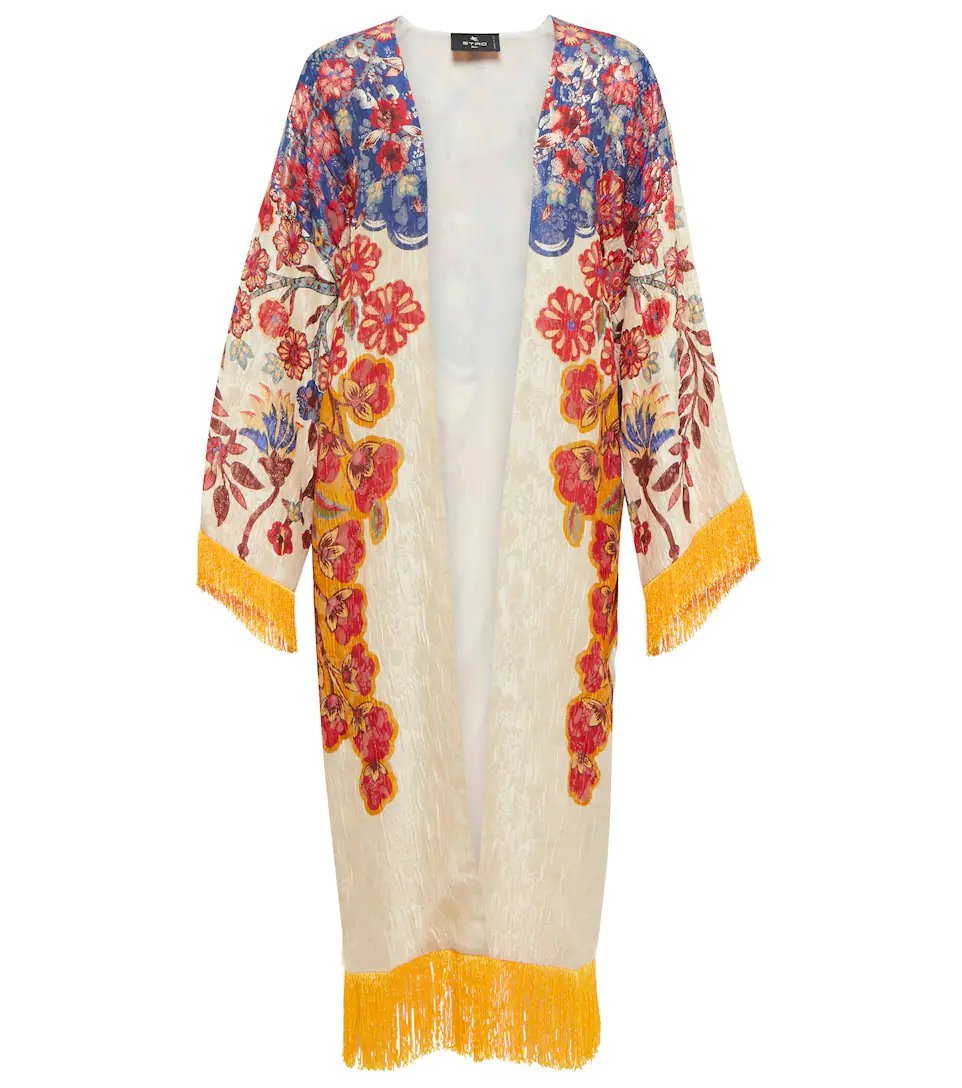
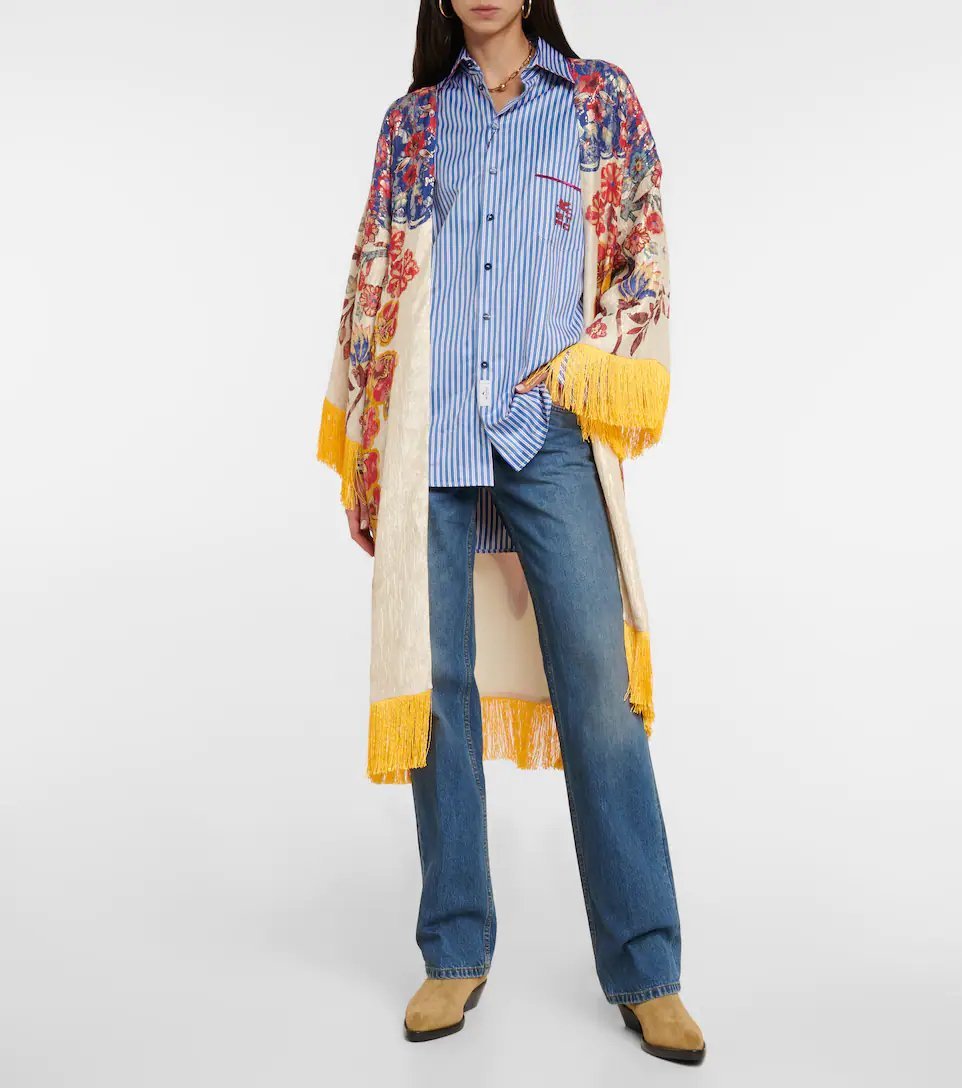
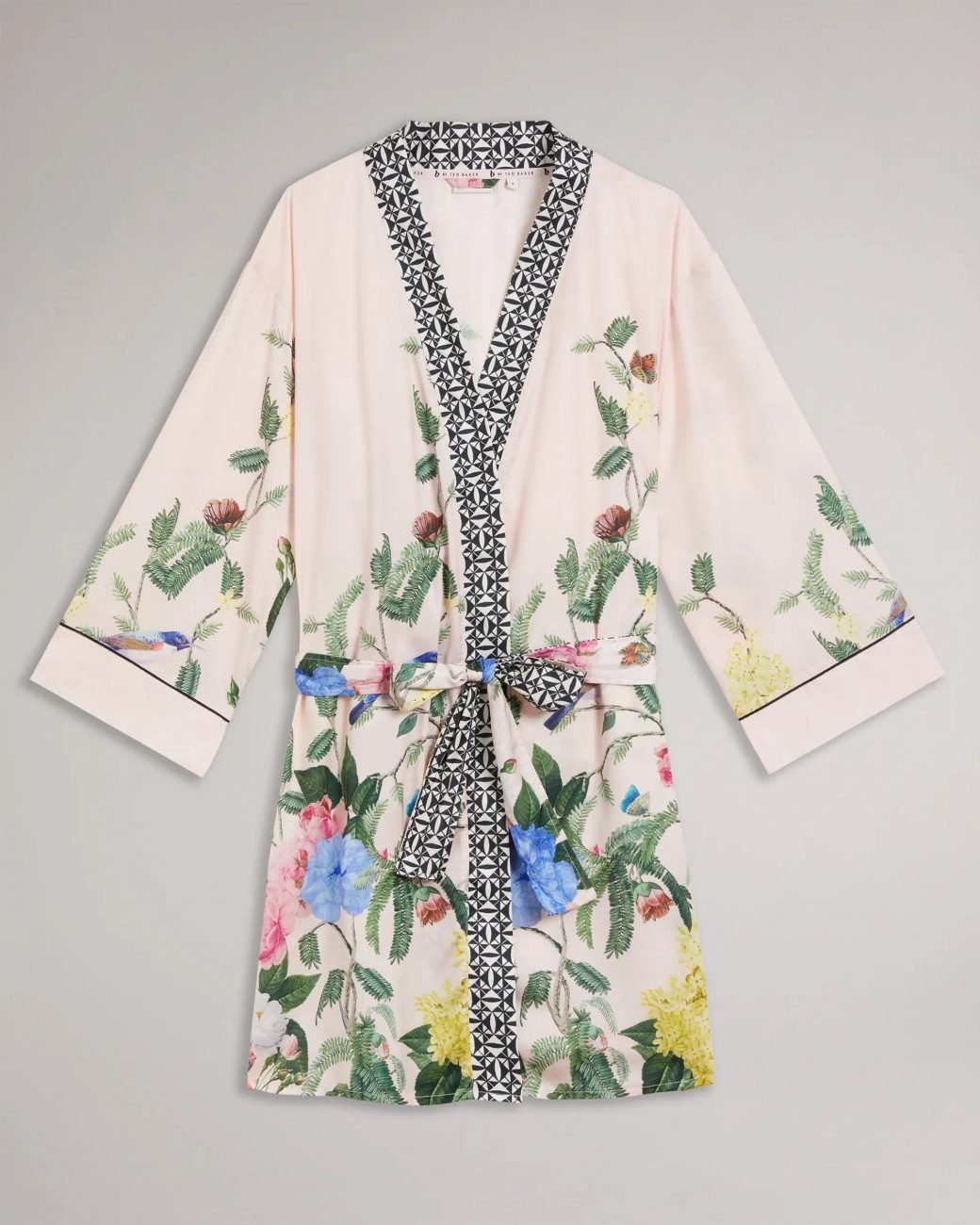
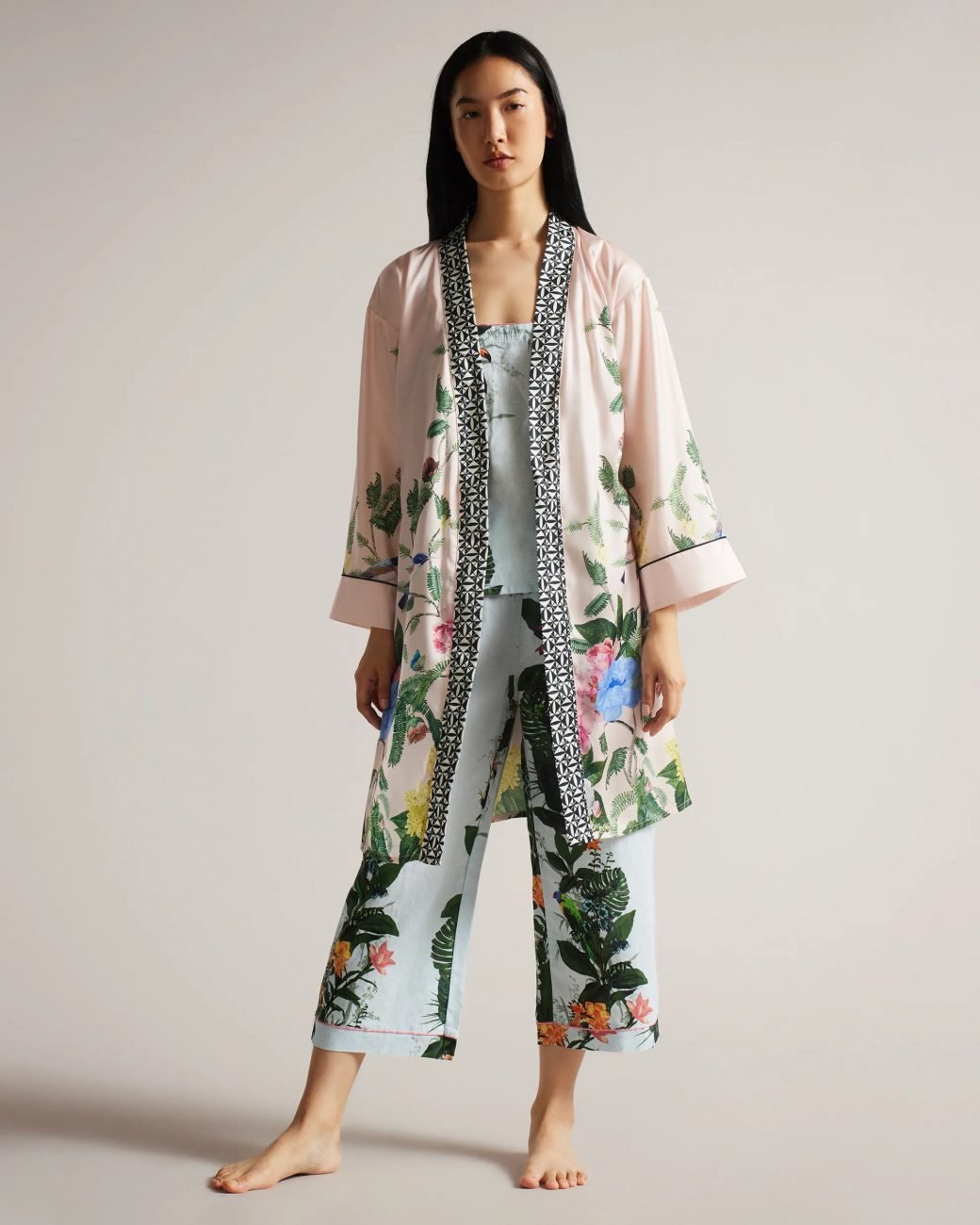
The Jacket for Men
On the men’s wardrobe side, we observe mainly short and straight cuts. With a very minimalist fastening system, if there is one. We see some models adding Asian influences through patterns and prints, more than adhering to the traditional shape of the piece.
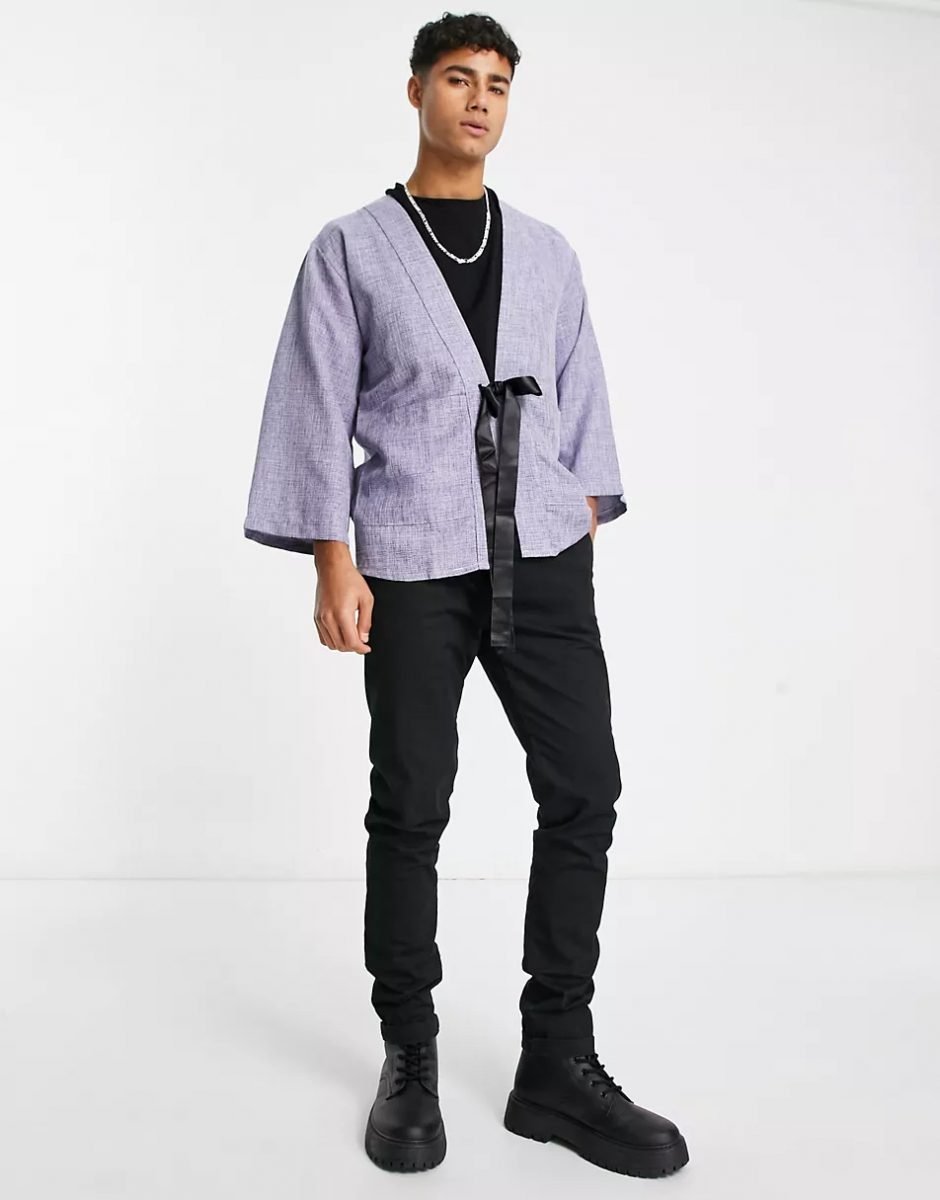
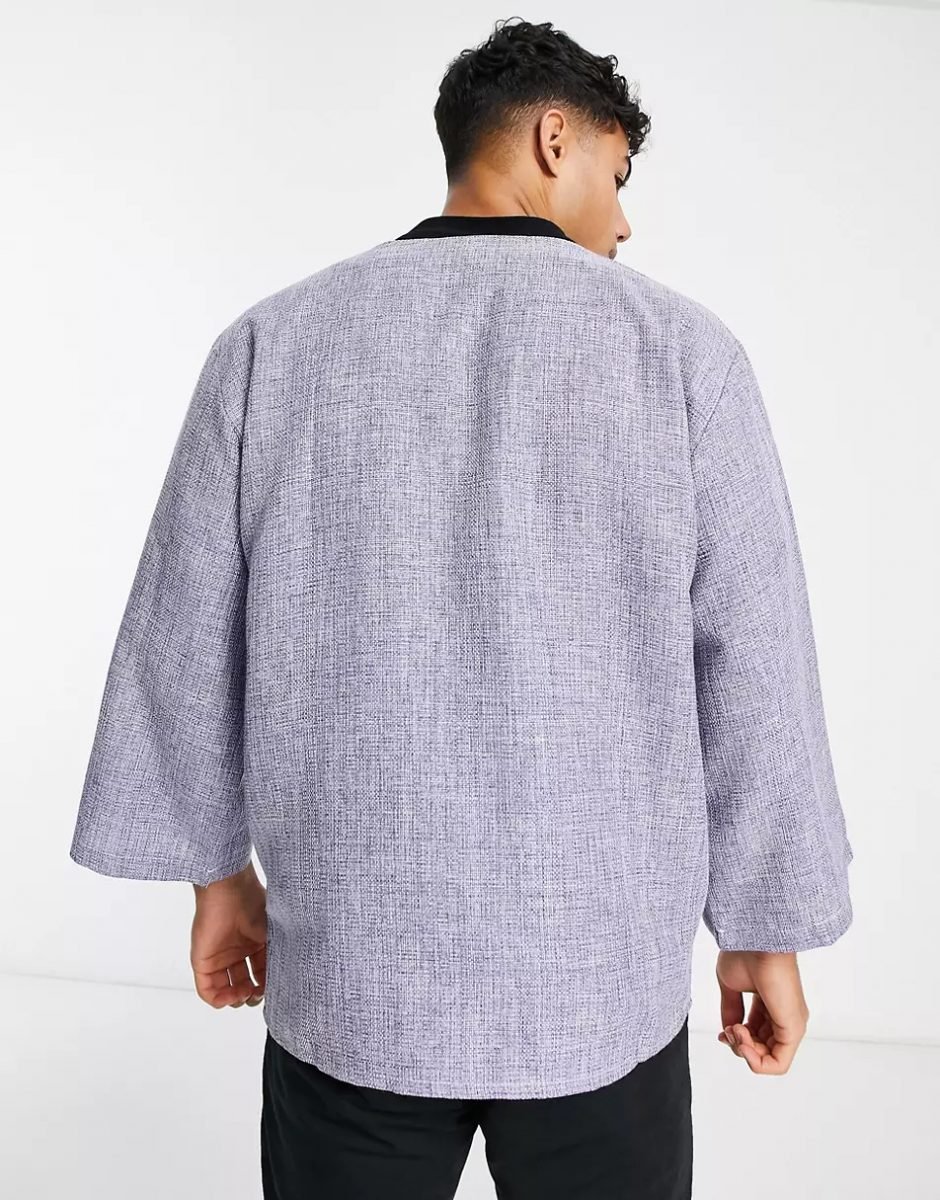
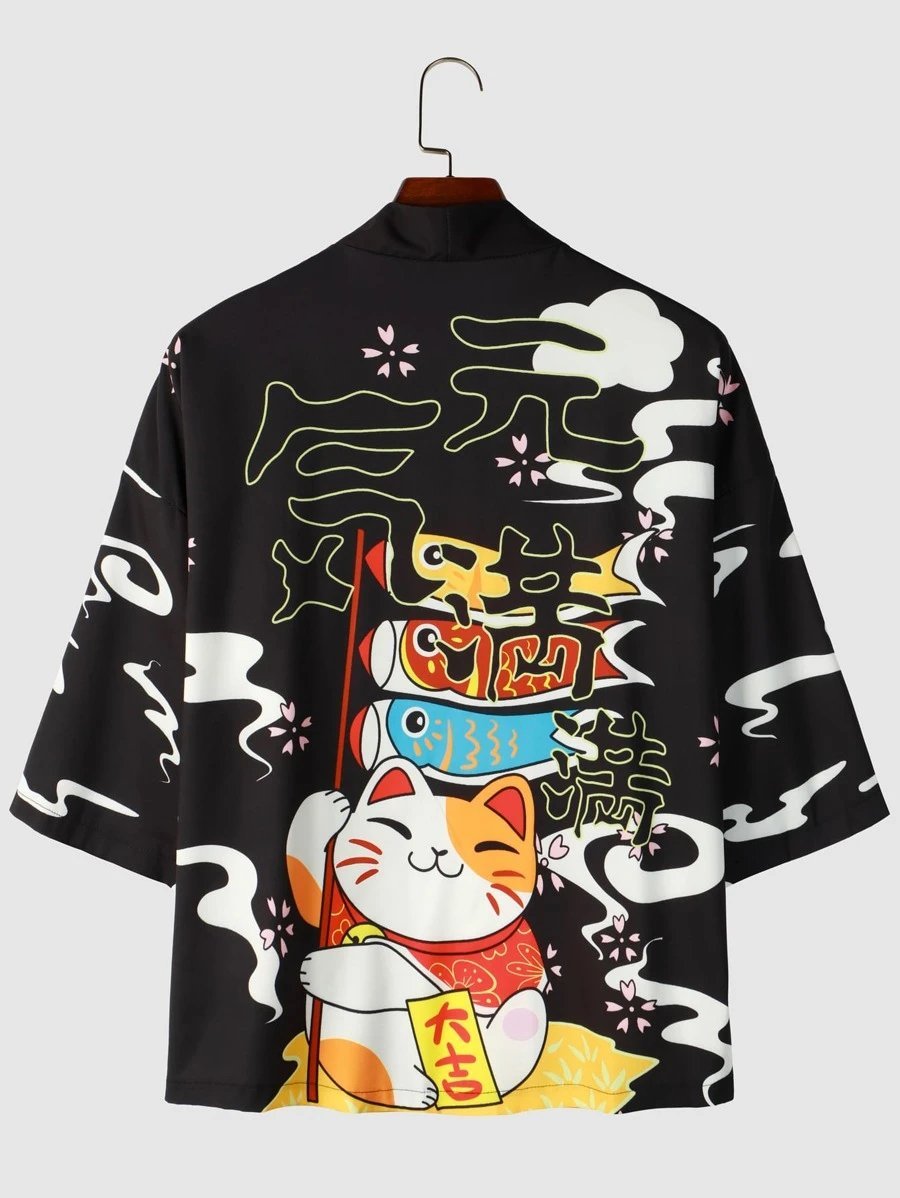
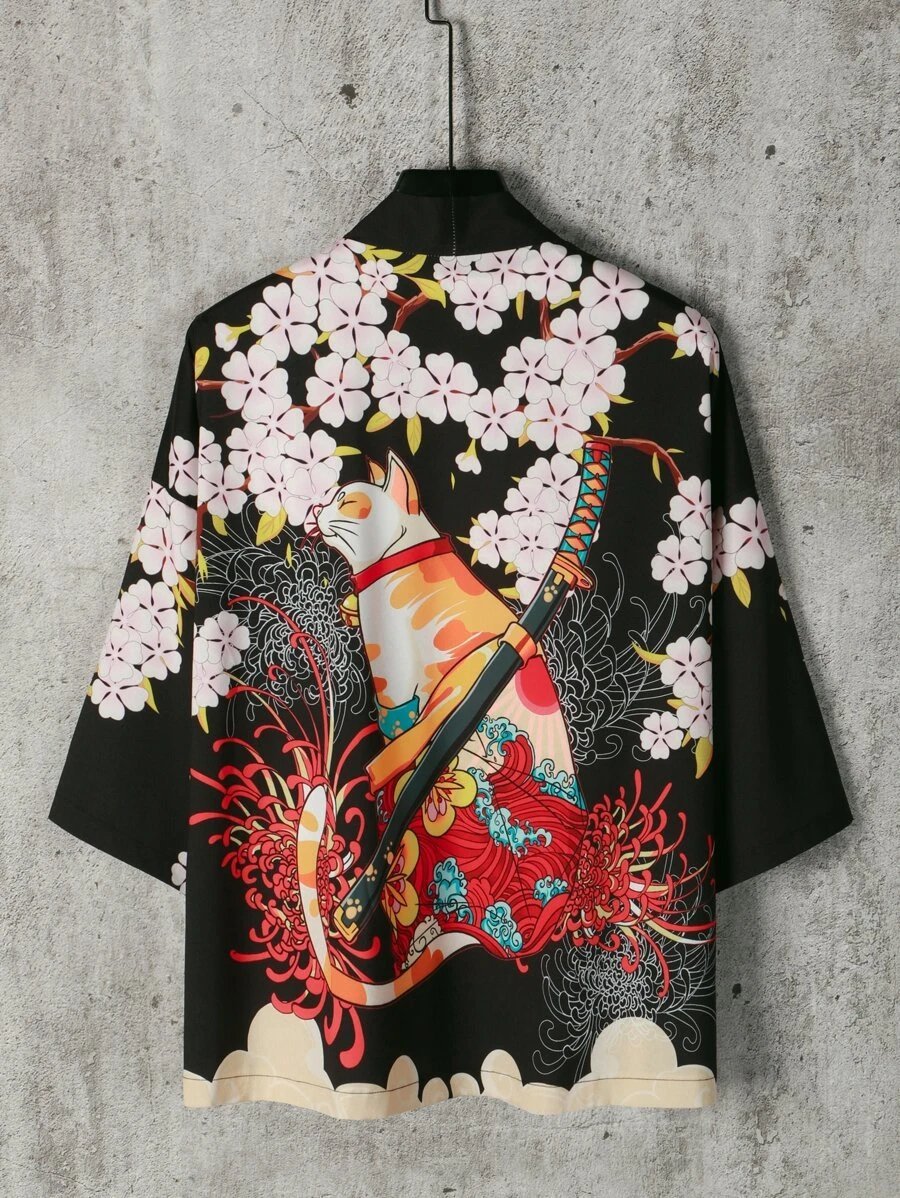
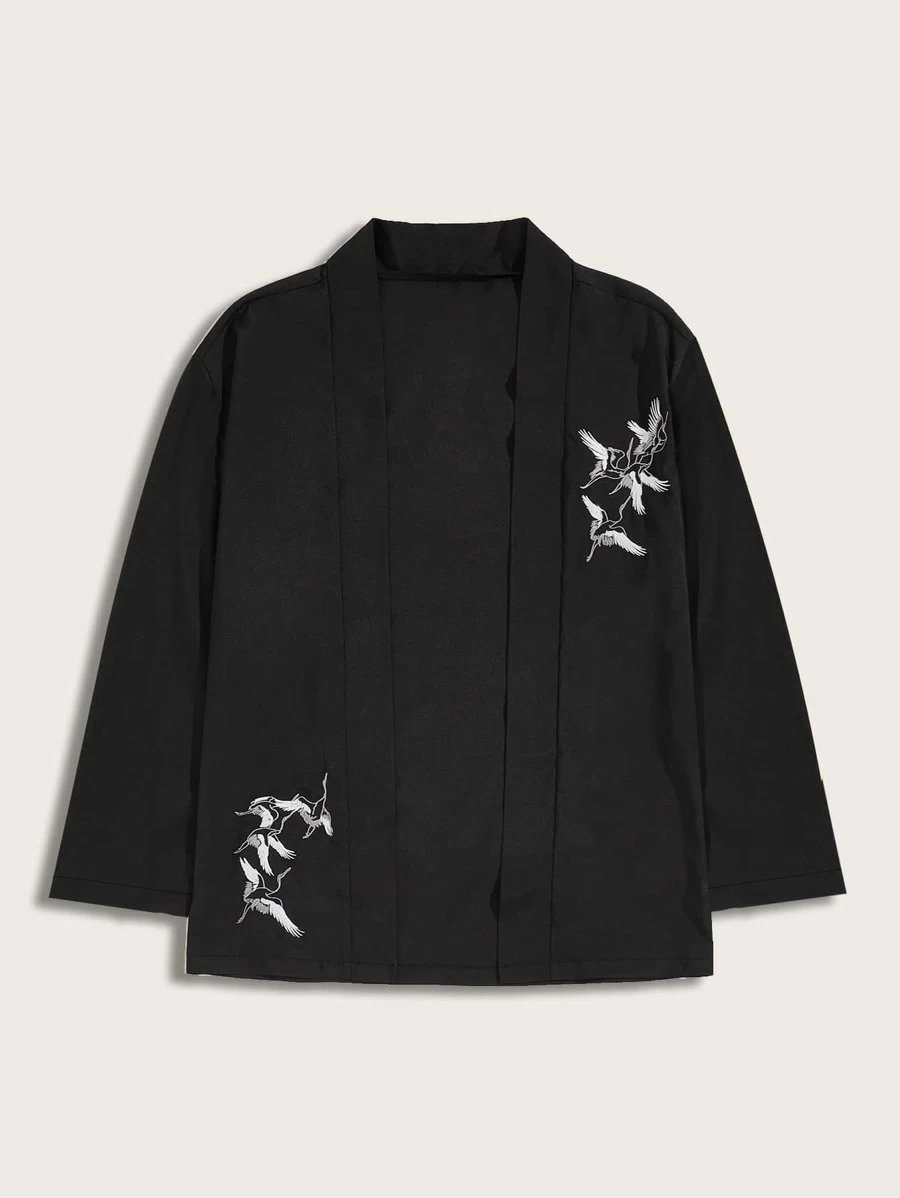
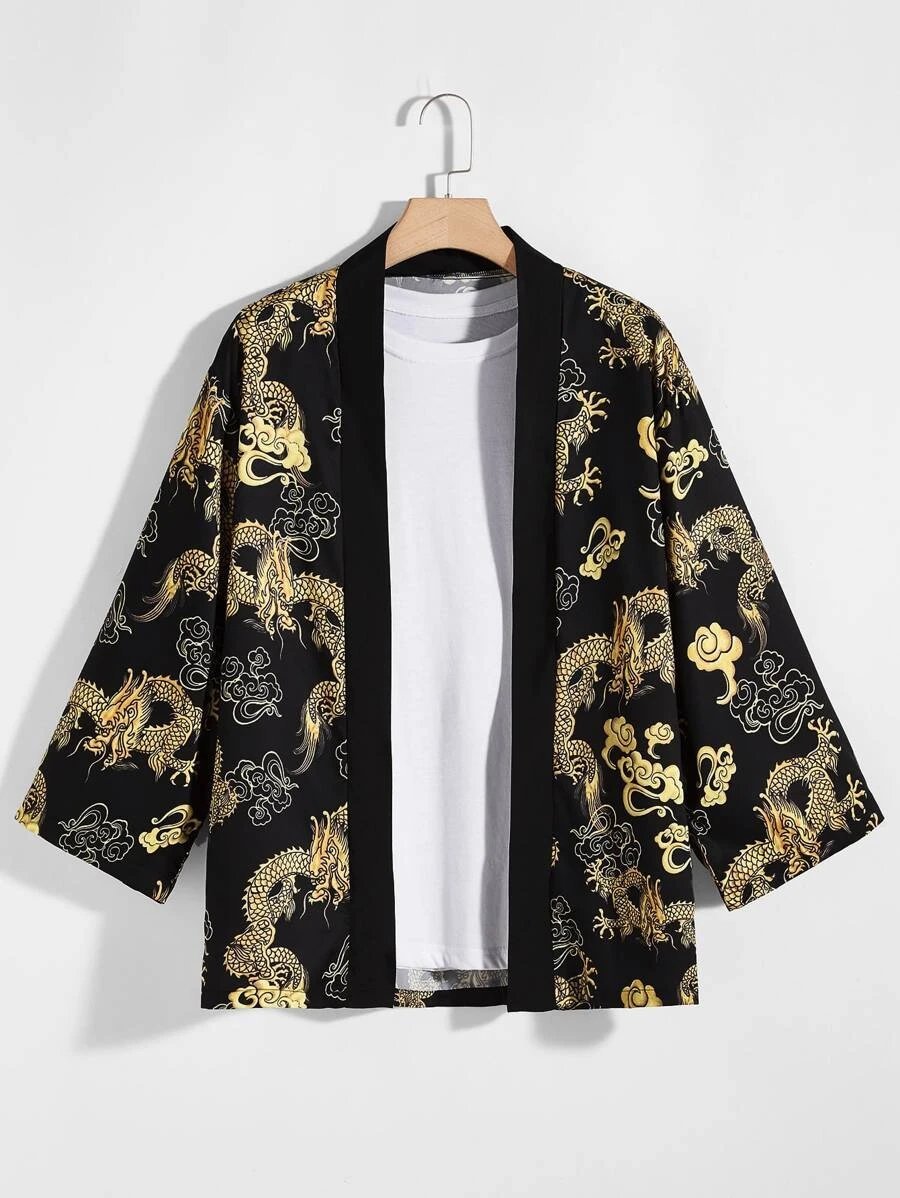
The Lingerie Rayon Kimono for Women
The pieces often respect the overlapping panels, as well as the presence of a collar. The sleeves feature a certain width, more or less faithful, while the belt has dramatically narrowed for more sensuality.
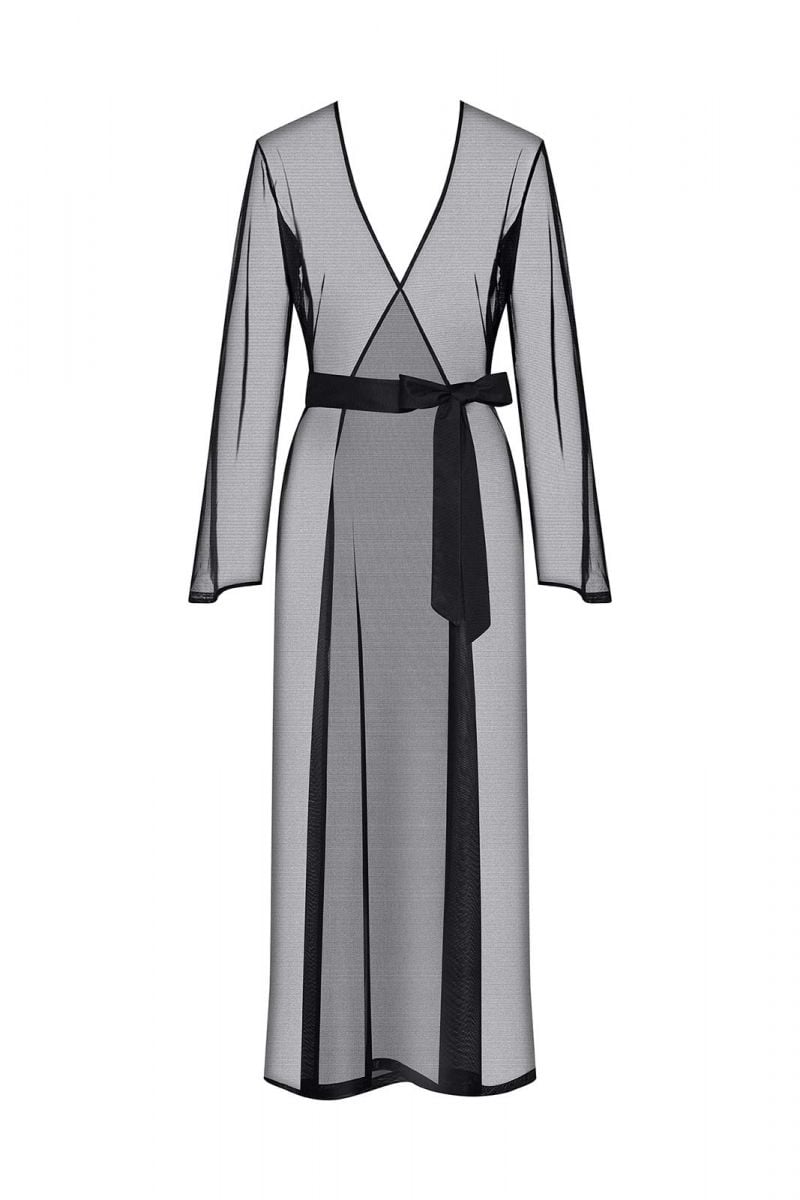
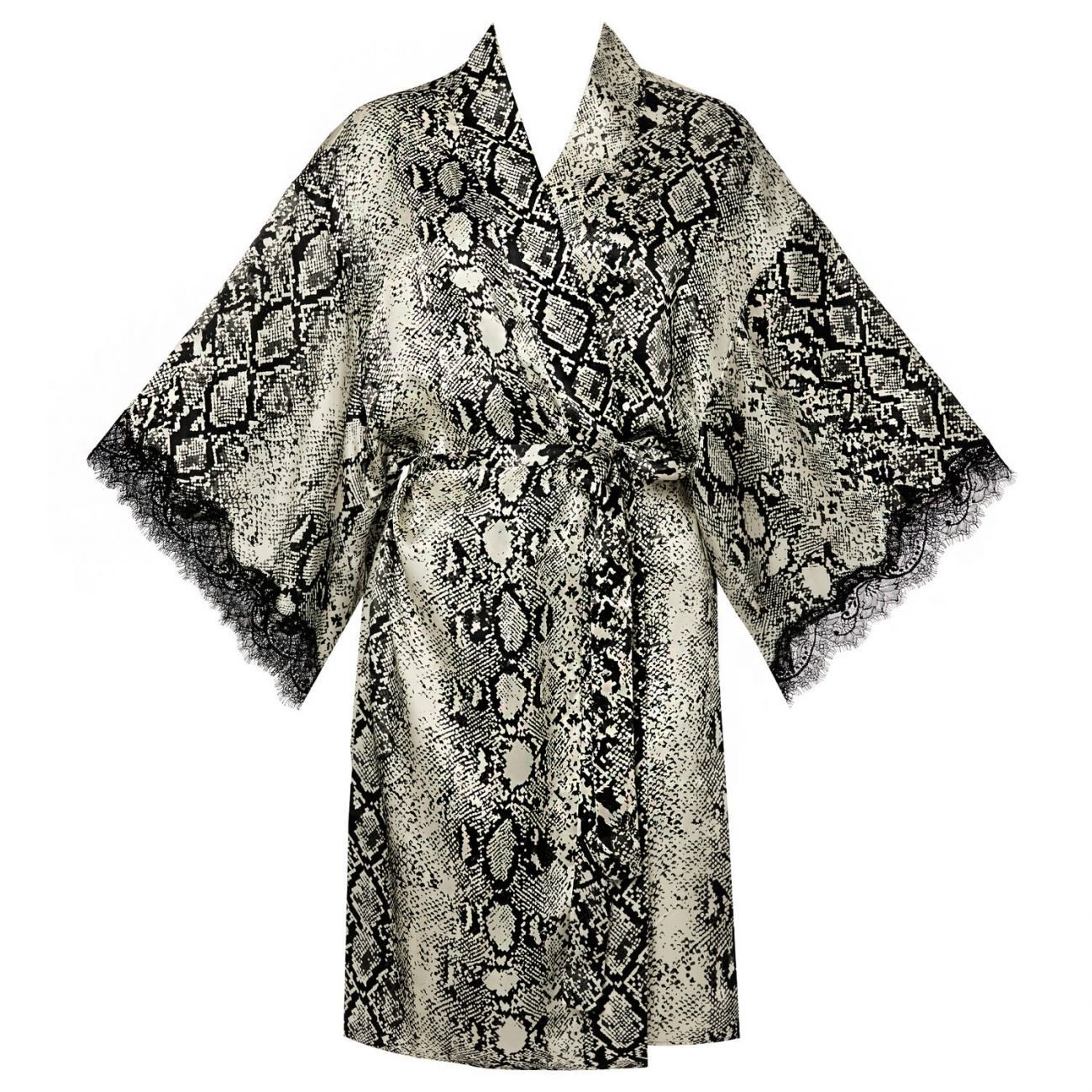
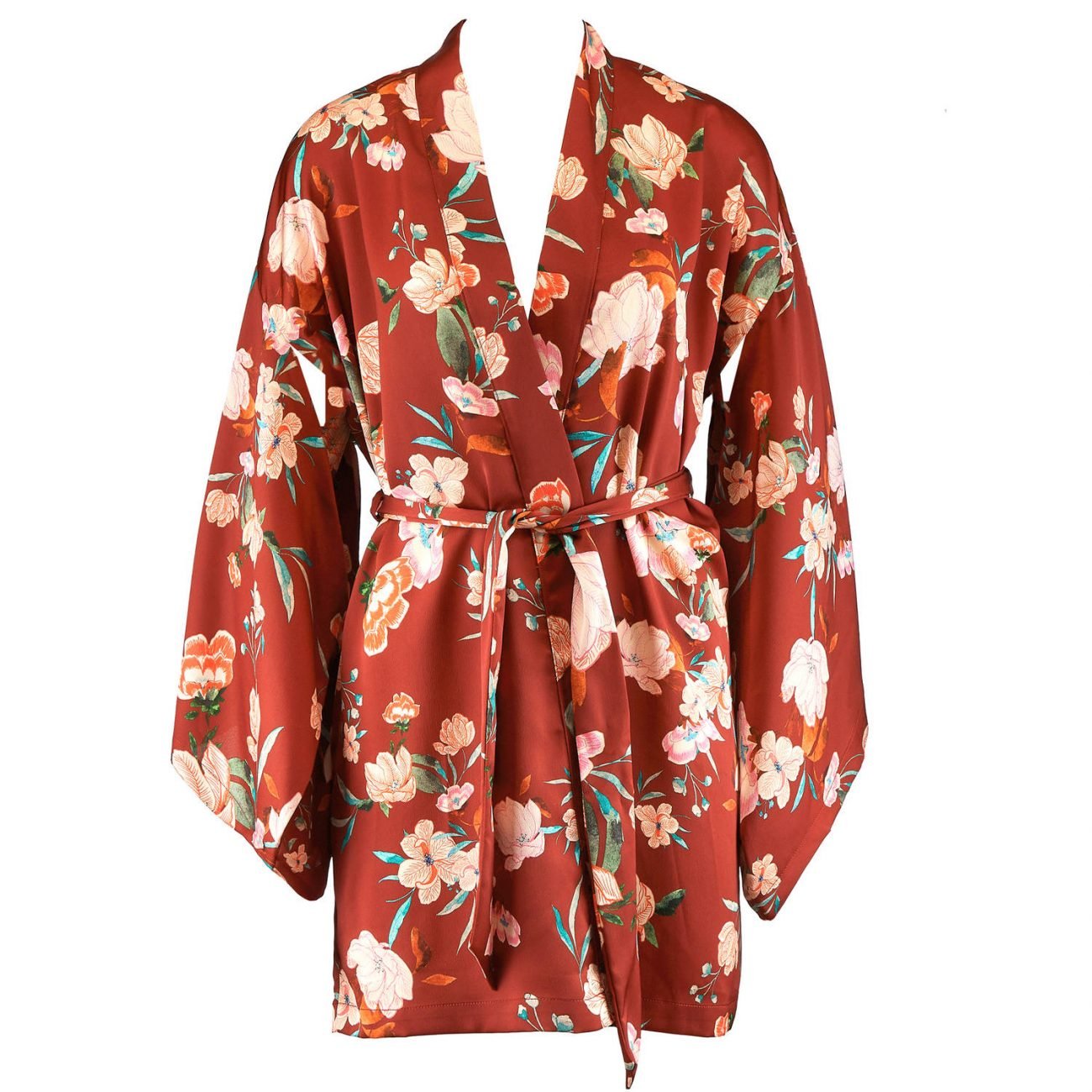
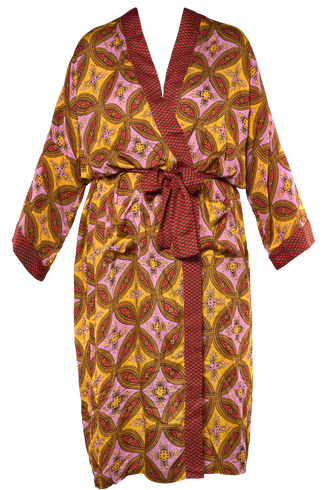
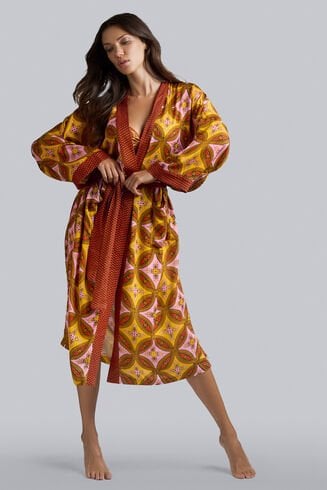
The Bathrobe for Men, Kimono Inspiration
The bathrobes created like a kimono appeared as soon as the garment was exported to the rest of the world. We saw a mix of cultures giving birth to these loungewear pieces.
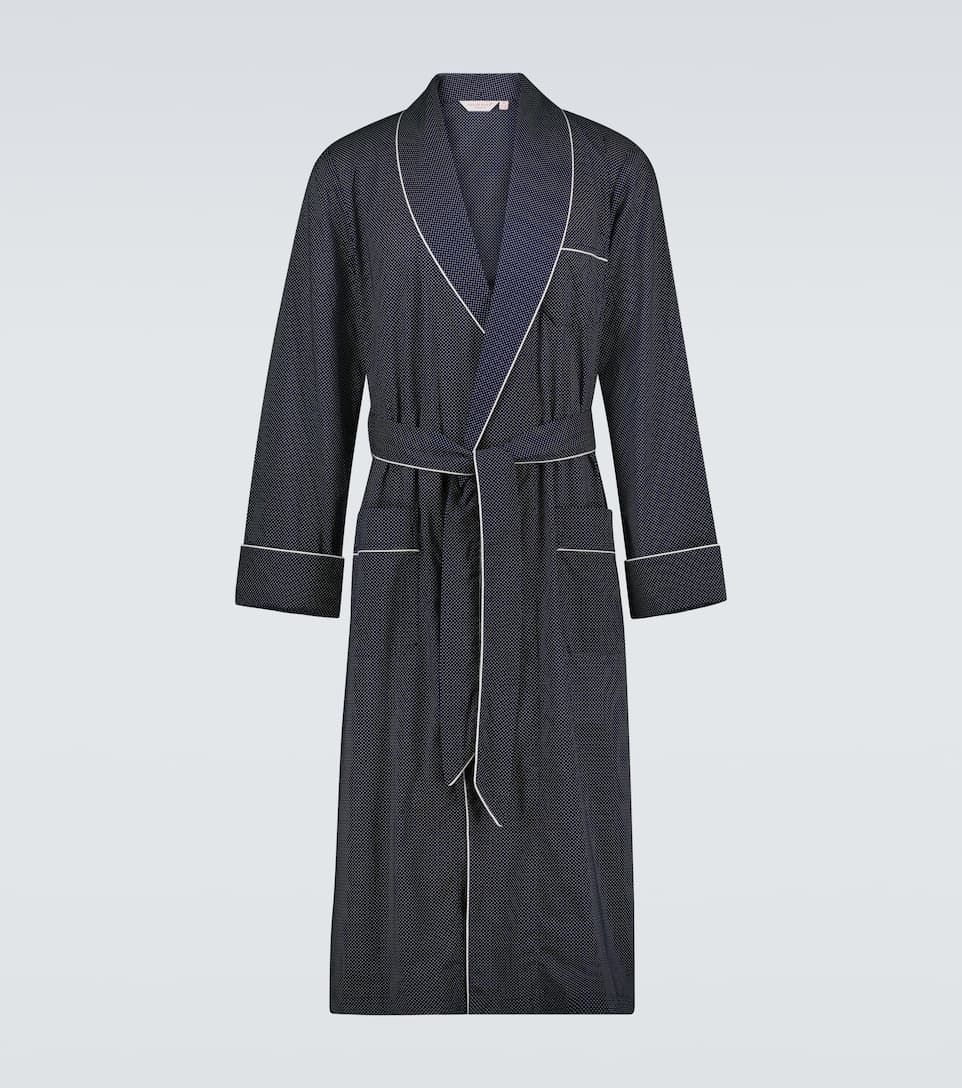
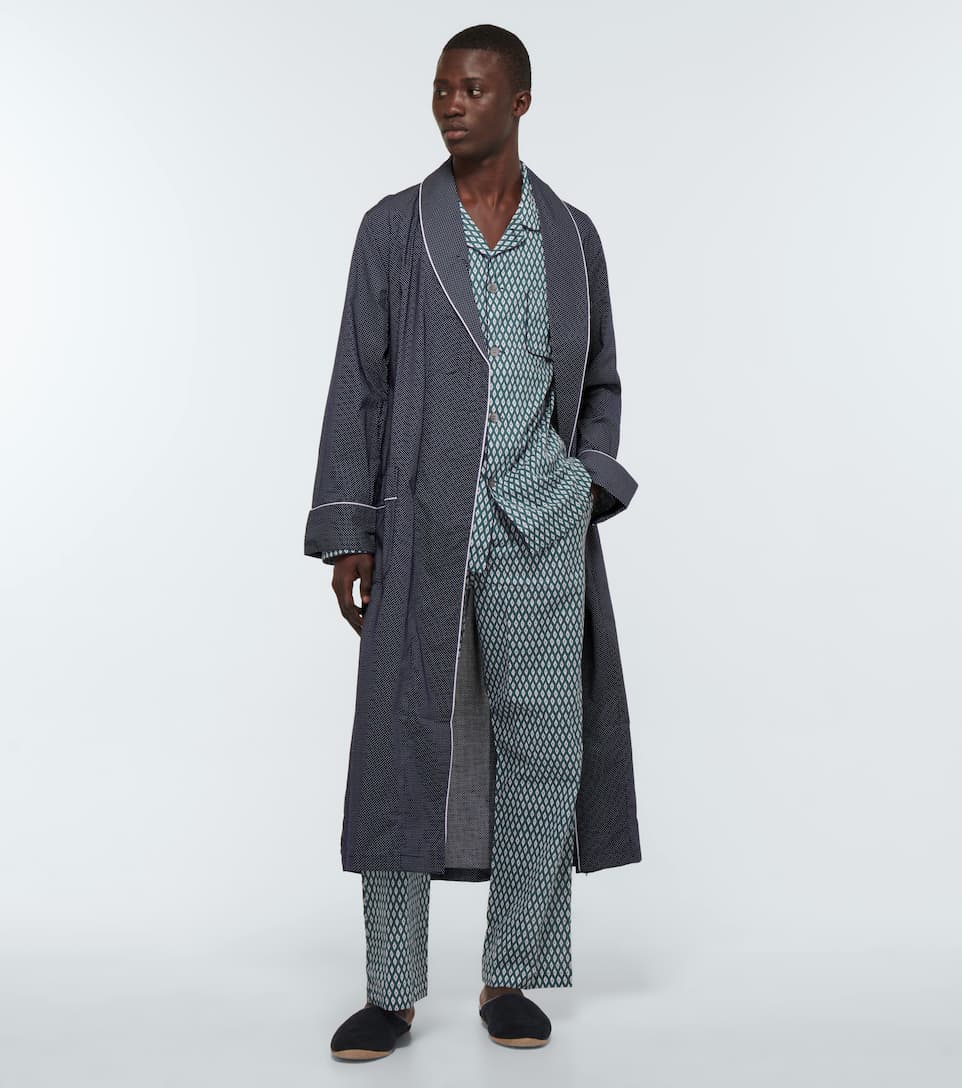
You have until May 28 to discover the exhibition, enjoy your visit!

